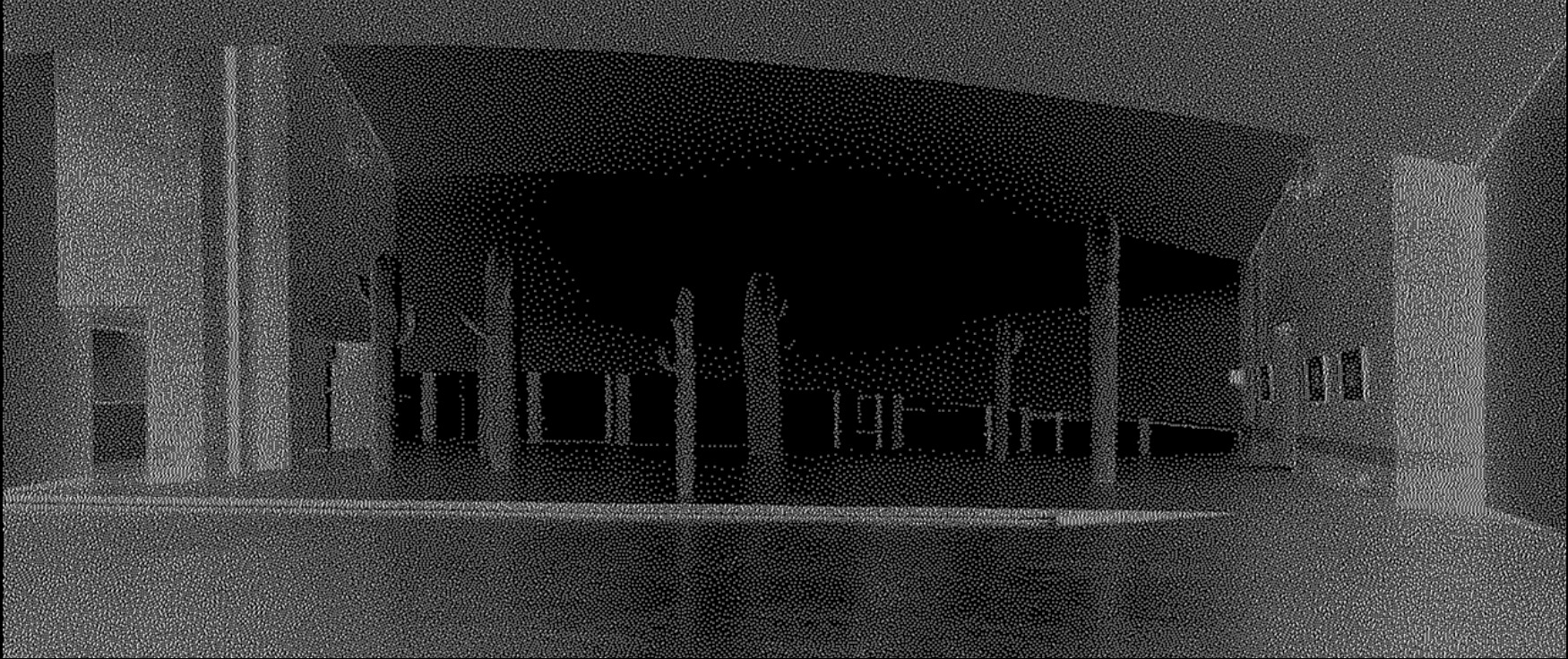

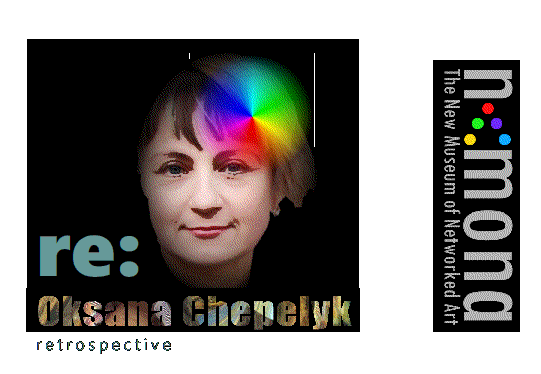



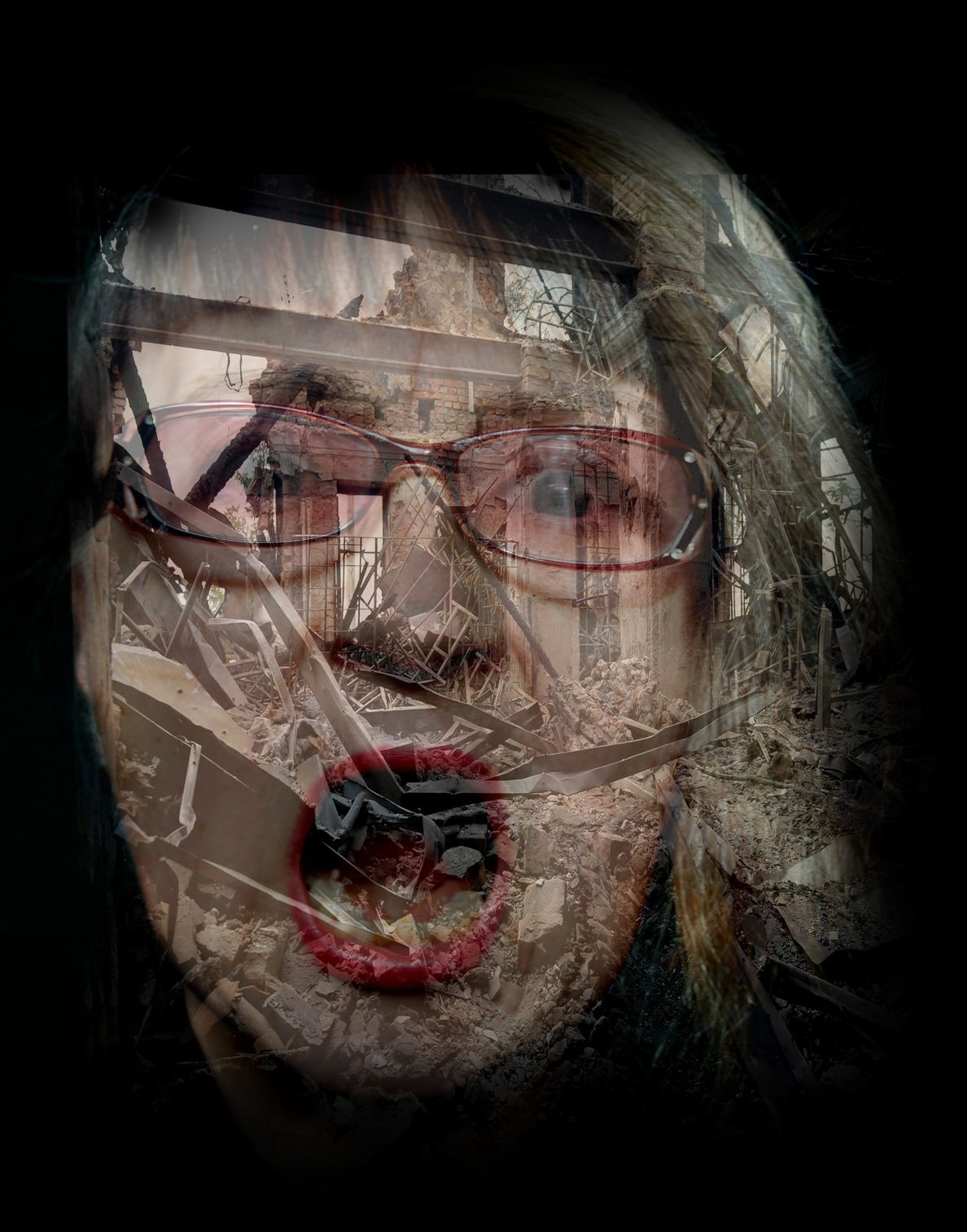


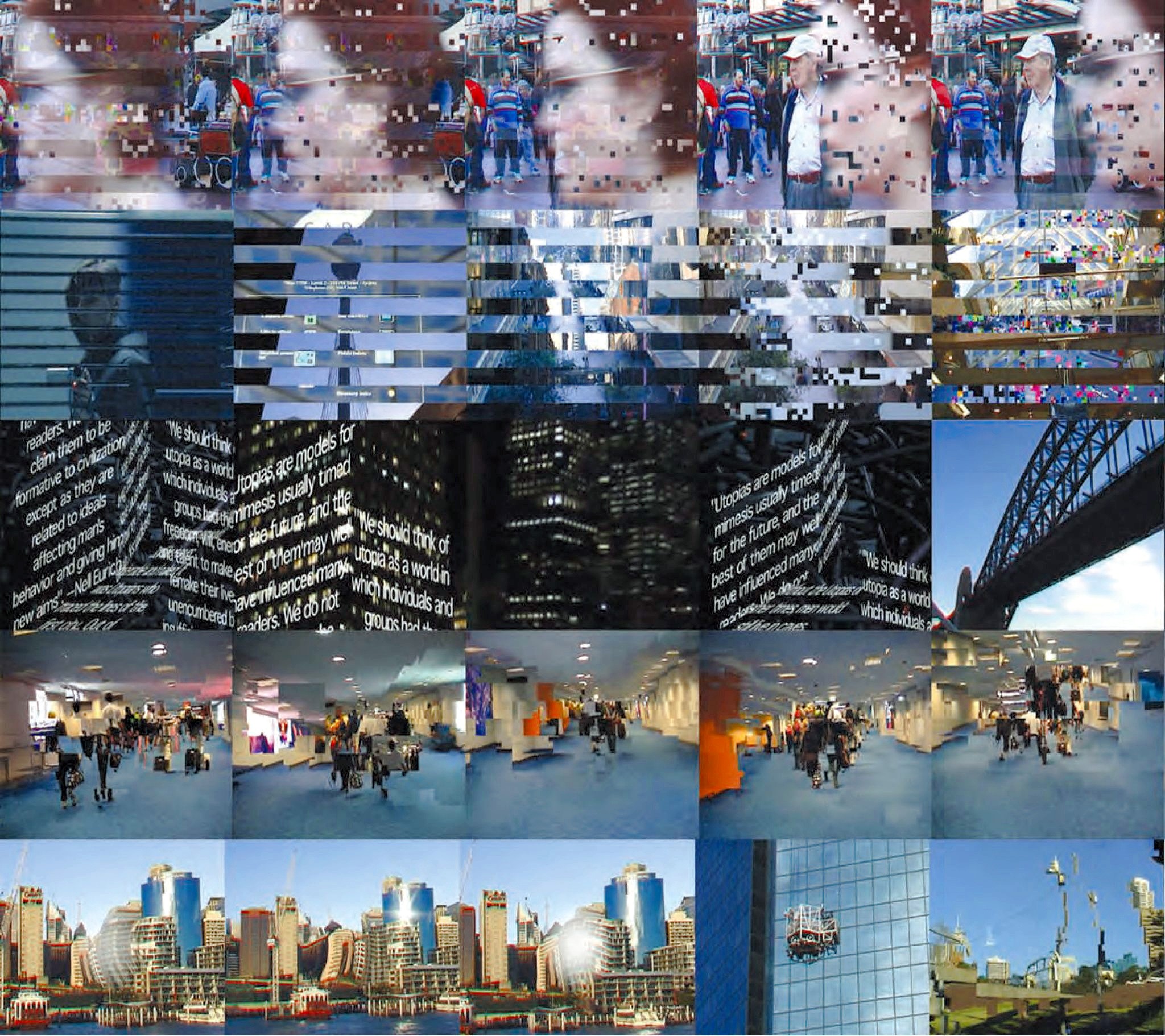
Deaf-Mute-Chorus, 1998-2004, 5:00
Leader’s Favourite Toys, 1998, 15:00
Virtual Sea Tower, 2000, 5:00
Introduction”, 2000, 9:50
Urban Multimedia Utopia, 2002, 10:00
Shifting Time, 2003/2004, 6:33
Chernobyl- Fairy Tale, 2007, 9:00

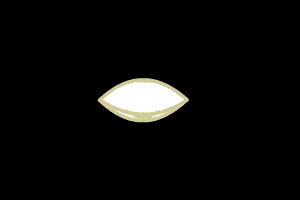 Click to view the video
Click to view the videoOksana Chepelyk Deaf-Mute-Chorus, 1998-2004, 5:00
Deaf-Mute-Chorus, 1998-2004, 5:00
“Deaf-Mute Chorus” conceptual video based on the Oksana Chepelyk’s performance of the same title realized in Kiev at the Cultural Center of Deaf-Mute People researches the physical endurance degree of social body. Author is interested in esthetic artistic position open to the co-experience of complexity of the world, focusing on cultural transformations and communication. According Joseph Beuys idea “to work with invisible material, that means to work with human relationships, it is work in human interactions, work in building new ideas and in language – that means people understanding one another, in dialogue; doing all these things in other more flexible materials than those of the fine arts. ”The “Deaf–Mutes Chorus” project presents the displacement of senses. The opposition concept of individual and collective is examined. A gesture of the deaf – mute has the information capacity. Here the collective gesture transforms into existential metaphor. The project approaches border situations as influenced by accords and agreements. The video researches personal physical and political boundaries marked by rituals such as the parades, gymnastic pyramids and traditions. The project can be considered as a real reverberation between eternal exile from all colours of the world and belonging. It is also the reaction on the United Europe when Ukraine becomes to be isolated and so for it sounds as nonsense. The work with disabilities people, who are isolated of necessity, underlines this idea. Here the performance collides with the exotic or “other forms of syntax”, where the artist’s work may be characterized by a certain lack of tangible development “The Deaf–Mutes Chorus” is the project where the impossibility of choice, of communication and lack of voice in collective Chorus is shown. Video is produced using the facilities of UCLA D/MA Department. This project was made possible by the support of Soros Center for Contemporary Art, Fulbright Research Program and UCLA. Film was shown at the “Molodist” International Film Festival in Kiev, Ukraine; 2004.
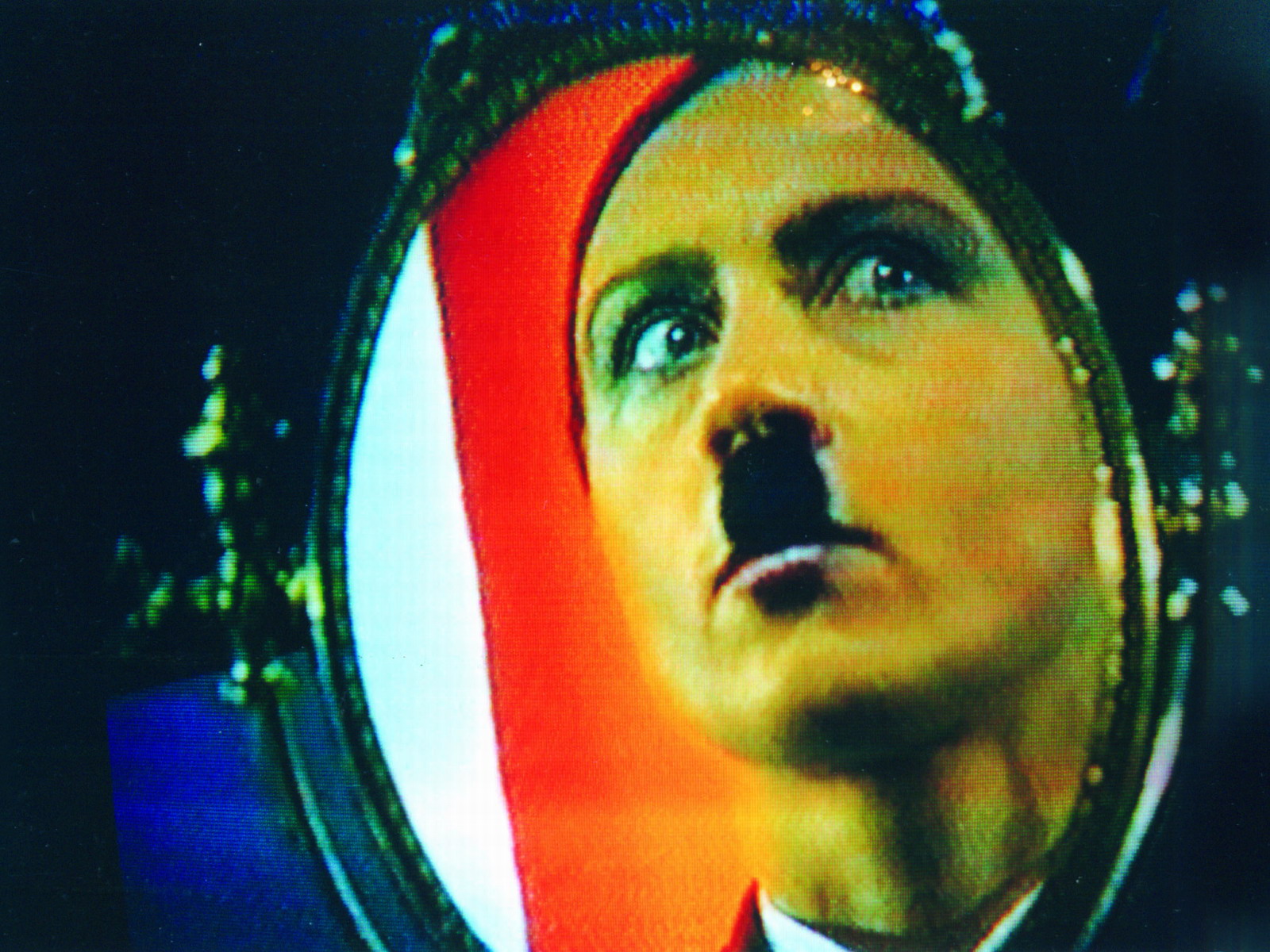
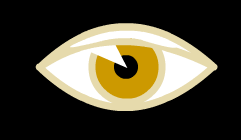 Click to view the video
Click to view the videoOksana Chepelyk Leader's Favourite Toys, 1998, 15:00
Leader’s Favourite Toys, 1998, 15:00
LEADER’S FAVOURITE TOYS» is a video film based on the author’s performance of the same title and interactive installation «Piece of Shit», realized at The Banff Centre for the Arts in Canada 1998. The video balances between the research of sexuality and politics. The author appeals to the danger of 20th century mass illusions and explores a problem of the responsibility at the edge of the millenniums.
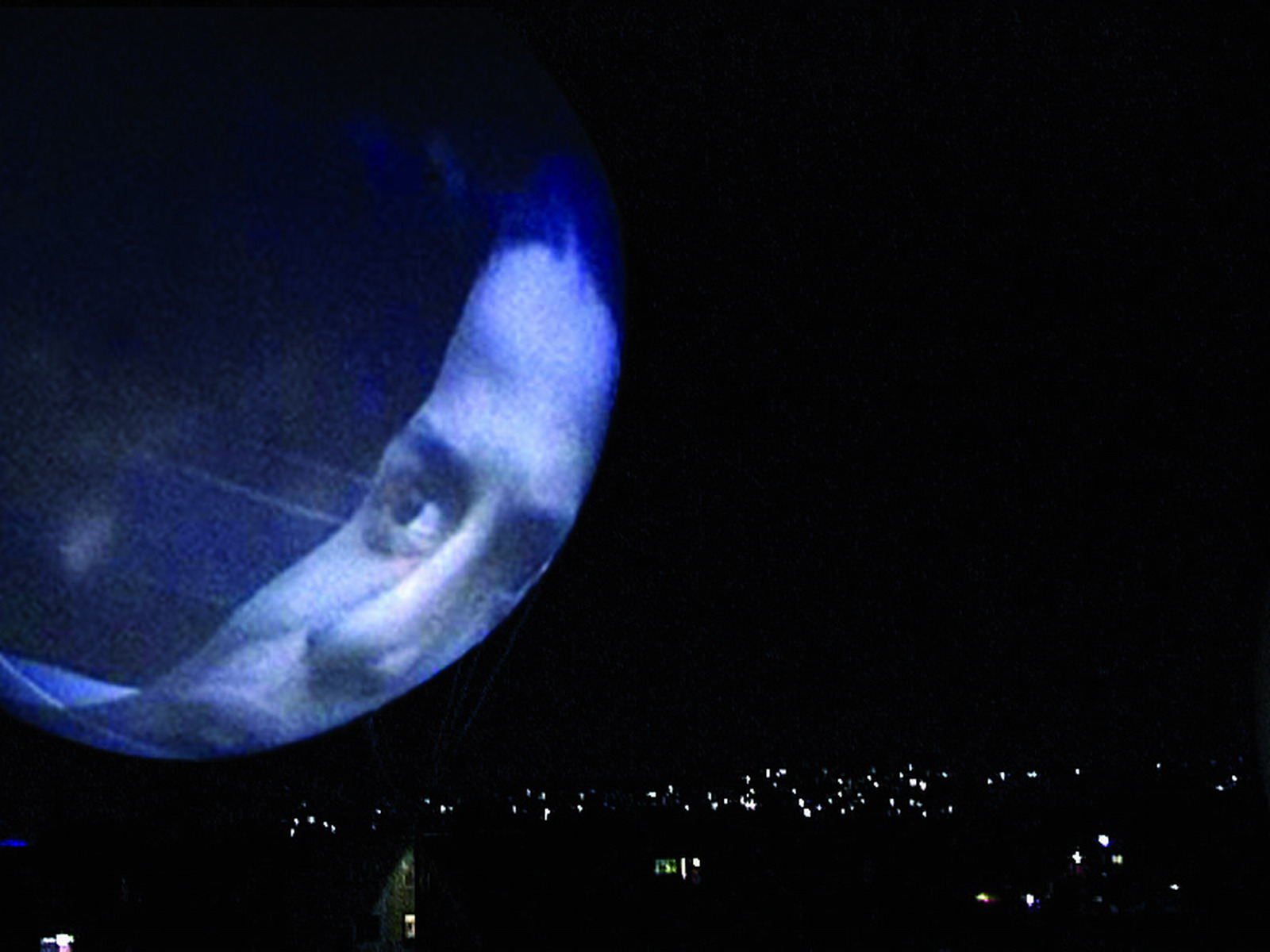
 Click to view the video
Click to view the videoOksana Chepelyk Virtual Sea Tower, 2000, 5:00
Virtual Sea Tower, 2000, 5:00
“VIRTUAL SEA TOWER” is a video based on the author’s site specific installation of the same title, realized in the favela Jacarezinjo of Rio de Janeiro in Brazil, 2000. Virtual Sea Tower is a communication project dealing with movement and exit out of the favela in urban, social and philosophical meaning. Art intervention with the main idea connected with a notion of architectural identification of the favela of Jacarezinho. The Air balloon lifts the video camera on necessary height showing the symbolic takeoff and openness – mental as well as physical, giving the possibility to look over the Horizon. The temporary intervention explores the opportunity to create the communication place and by means of installation of the Virtual See Tower a symbolic connection to the city of Rio de Janeiro with its icons (such a Christ’s figure, Sugar Loaf and so on). The people standing at the same place during the event experienced the virtual lifting from the public space to the highest possible point of the Virtual See Tower that they had a clear view of the town on the monitor installed there as a personal touch. In a windy day The See Tower transforms in the Virtual Migration Tower. During the night the balloon as a screen catches the video projection showing the faces of the people from the favela that narrate about their Dream. The people used to appeal to the chiefs, or to the government, or to the God. The more unexpected are their faces seen in the sky instead of the Lord. The virtual installation is appealed to provoke conscience shift, to affirm the potential of the people.

 Click to view the video
Click to view the videoOksana Chepelyk Introduction, 2000, 9:50
Introduction, 2000, 9:50
“Introduction” video explores a problem of the violence in the favela of Rio de Janeiro. Video is based on the favela images tells the story in the form of the instruction about the necessary behaviour in the favela with the police, with the inhabitants in the unforeseen situations of the drug dealers’ conflicts. It appeals to the manipulative pattern of the global world.
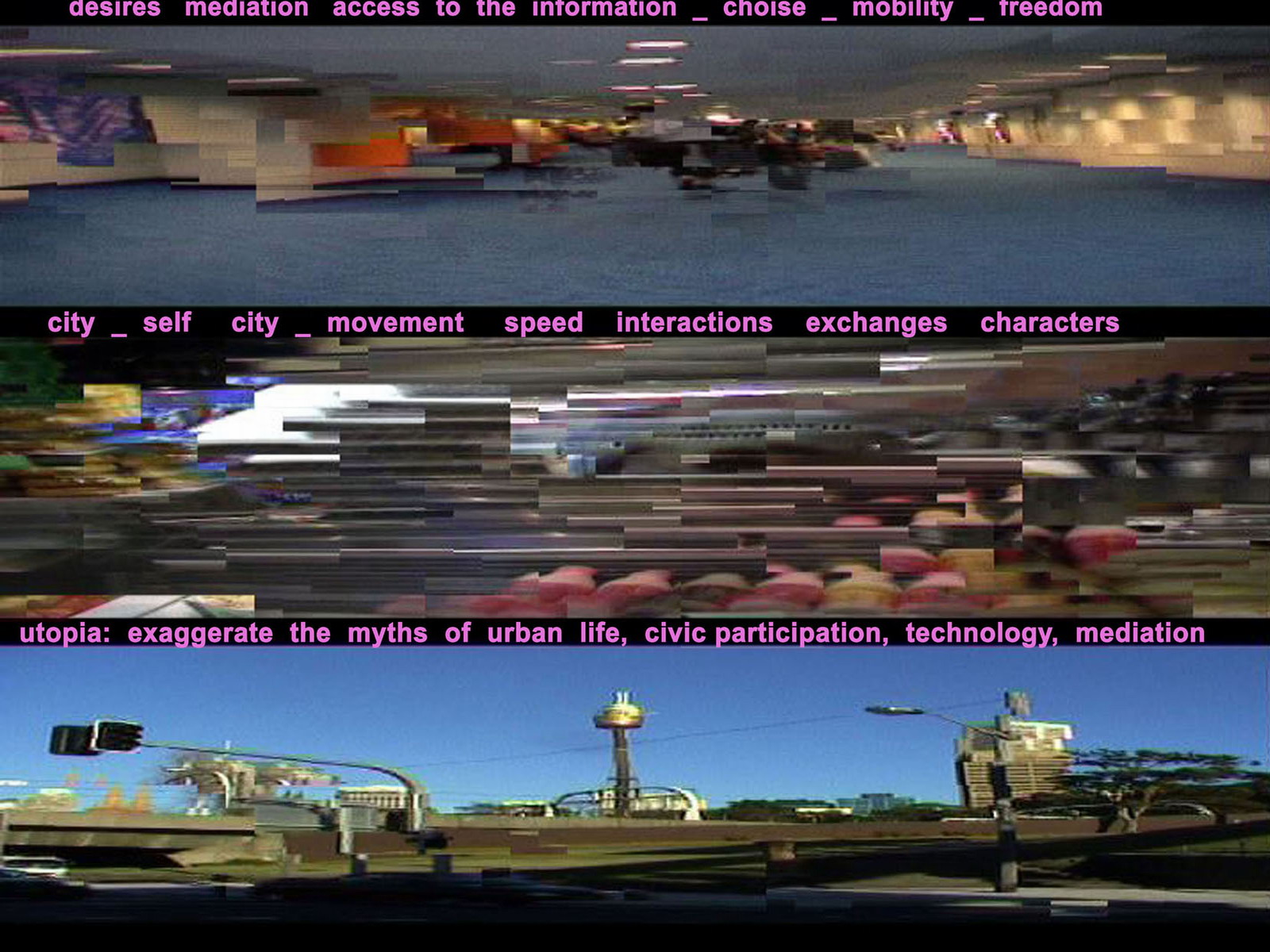
 Click to view the video
Click to view the videoOksana Chepelyk Urban Multimedia Utopia, 2002, 10:00
Urban Multimedia Utopia, 2002, 10:00
“UMU” video is dealing with the process of globalisation represented by multi-layered real urban and virtual spaces, for which new cultural concept has to be developed. Video explores a topic of the ICT issue. Mobile communication, telematic tools, worldwide collaborative structures and global political alliances create a new cultural landscape whose rules will have to be worked on. The concept of the video project is referring to the fact of an intensive economical development of the Asian Technology Corridor, by means of implementation of “cyberport”, “cyberincubator”, “silicon harbour” in order to establish an intelligent city. “Urban Multimedia Utopia” is dealing with realization of a utopia of the political ideal of a fairer society. While the ideal urban development wins by its gradual conversion reality, the components of the material city (architecture, space, traffic, movement, advertisement) become the text, statements in the film, which rise “from the material”. The Western artist utilizes the interactive space of ultra communications and ultra speed information delivery for propaganda purpose and missionary aims for improvement of democracy, equality, political conformism culture of personal responsibility etc. For the Ukrainian artist too free and unhindered circulation of information looks always like a provocative miracle, so his aim is to disclose this soft and hidden totalitarism of new media its masked control and dictatorship over the cultural consciousness.

 Click to view the video
Click to view the videoOksana Chepelyk Shifting Time, 2003/2004, 6:33
Shifting Time, 2003/2004, 6:33
“Shifting Time” video investigates the very nature of the global survey in the realm of terror with its numerous cameras, its ubiquity and its perpetual multiple flows documenting author “Terrorvision” installation. “Terrorvision” is an 8 switches cameras ring installation with the trace of the feet on a small pedestal. When the exhibition visitor standing up on the pedestal inside of circle 8 cameras capturing his face switching from one to the next (exploring dynamic circular movement around him/her). But visitor can’t notice anything and only on the next exhibition space he/she is facing his/her own picture appeared with the delay on the double screen. Are we afraid ourselves? Are we afraid The Other? What is the Face of The Other? Recognizing people from their faces has become an important task in many applications. Humans perform this task easily and robustly. The researchers explore ways to develop an automatic face recognition system that can recognize faces from still images and videos.
“Terrorvision” project is dealing with such scientific approach. This is a study of total survey depicted through the research using the technique of detournement according Guy Debord as an attempt to discover the connection of the culture of fear with the American dream so riddled with violence. The spaces function metaphorically as both a manifestation of social phenomena and a container of the imagination and creativity. Taking total survey as metaphor, the work invites us to reconsider terror of media feeding culture of fear.
The transient nature of the artists’ interventions in the space serves to question the preconceived ideas of the “surveillance camera” as a provider of security and a definer of reality. The video project reveals the mechanisms which becomes a platform for the deconstruction of usual connection, non-controlled behaviors and reinforces the phenomenon of the terrorvision perception.
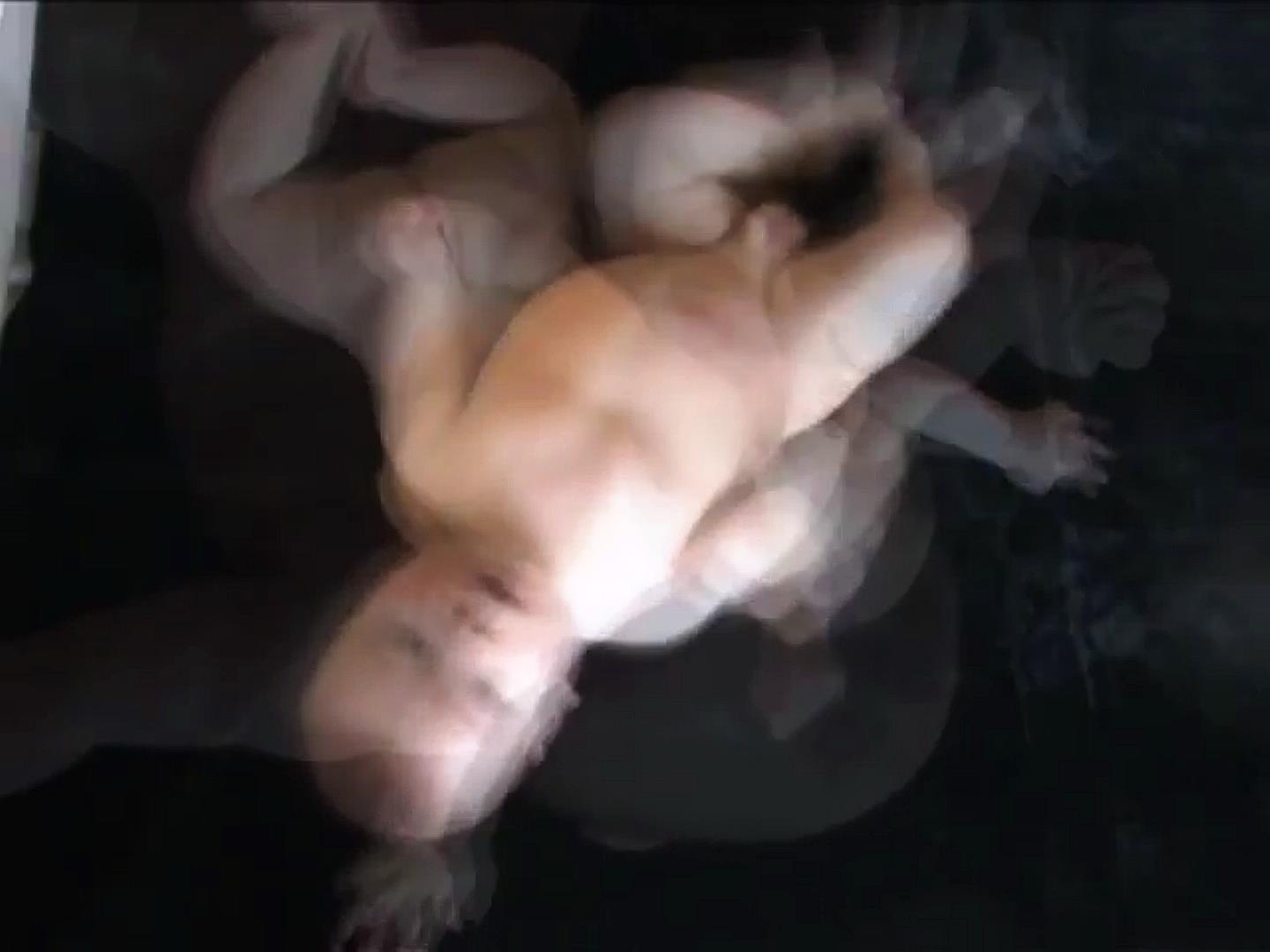
 Click to view the video
Click to view the videoOksana Chepelyk Chernobyl- Fairy Tale, 2007, 9:00
Chernobyl- Fairy Tale, 2007, 9:00
“Chernobyl’ Fairy-tale” video shows the civilization and existential catastrophes unfolding on the female body. All attempts to touch the subject of Chernobyl’ catastrophe cannot avoid the reference to genetic fund of nation. The concepts of the “female” and “femaleness” are utilized to explain what is taking place today in order to think about “the future”. Video hopes to raise questions regarding roles, identity, responsibility and expectations related to gender. Film does not give prescriptions or appeals to act but questions about social space, code of existence and life of people. Project presents a female body in a multi-dimensional micro-macro reading. Convex body surfaces discover correspondence between the primary shape of Ukrainian “pysanka”, the philosophy symbol of Beginning, where an ornament is an ancient cultural code, and in the same time forming image of the Earth. Video images show a contemporary ornament created by tattoos and scenes played on a pregnant woman body are a message about the civilization about existential catastrophes. The tiny human figures placed on a pregnant female body form an image of an Earth civilization field. The row of toy figures standing stock-still on the edge of tattoo of an embryo as on the volcano crater provokes the interpretation of a birth as a Big Bang. Film can be considered as an expression parodying scientific and technological methods and procedures, but also as an expression of the unsafe life in the world.

Real Master Class, 2008, 20:00 2007, 9:00
Farwell to SJYSCRAPERS II, 2010, 3:22
Manifesto, 2011, 4:45
The Reborn, 2013, 1:00
Venetian Stanzas, 2013, 5:00
Premonition of War, 2014, 6:65
Letter from Ukraine, 2014, 7:31
Dragon and Beauty”, 2014, 8:53
Alone, 2014, 9:49
Face to Face, 2014, 10:00
Tree of Life, 2016, 6:00
Not Simply Game”, 2017, 15:07
Odesa Collider or Turbulence vs Quantum Transition, 2017, 22:00
“GAIA” , 2011/2020 5:00
The Ocean”, 2021, 13:00
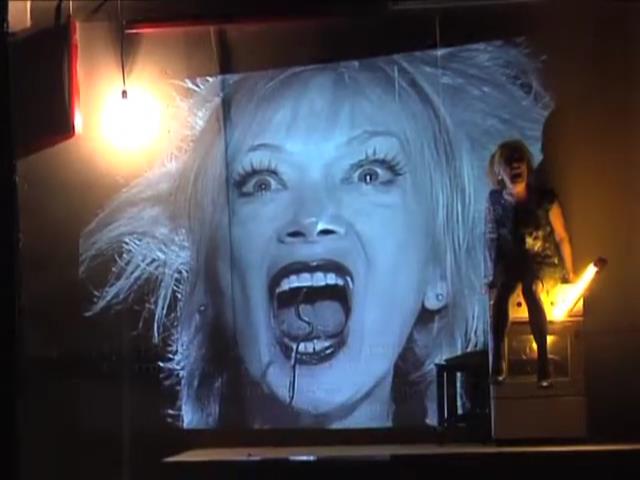
 Click to view the video
Click to view the videoOksana Chepelyk Real Master Class, 2008, 20:00
Real Master Class, 2008, 20:00
This is a film about being Ukrainian artist, about prospects of Ukrainian art. It shows the way to resist and to get the freedom. We observe the director Andriy Zholdak holding theatre rehearsal. A film researches a creative personality and cultural climate and reflects on the prospects of Ukrainian nation. The sounding balloons go to the noosphere. According to Vernadskyi’s theory about noosphere, culture is the original runback of energy that is accumulating on Earth and carries out influence on Space.
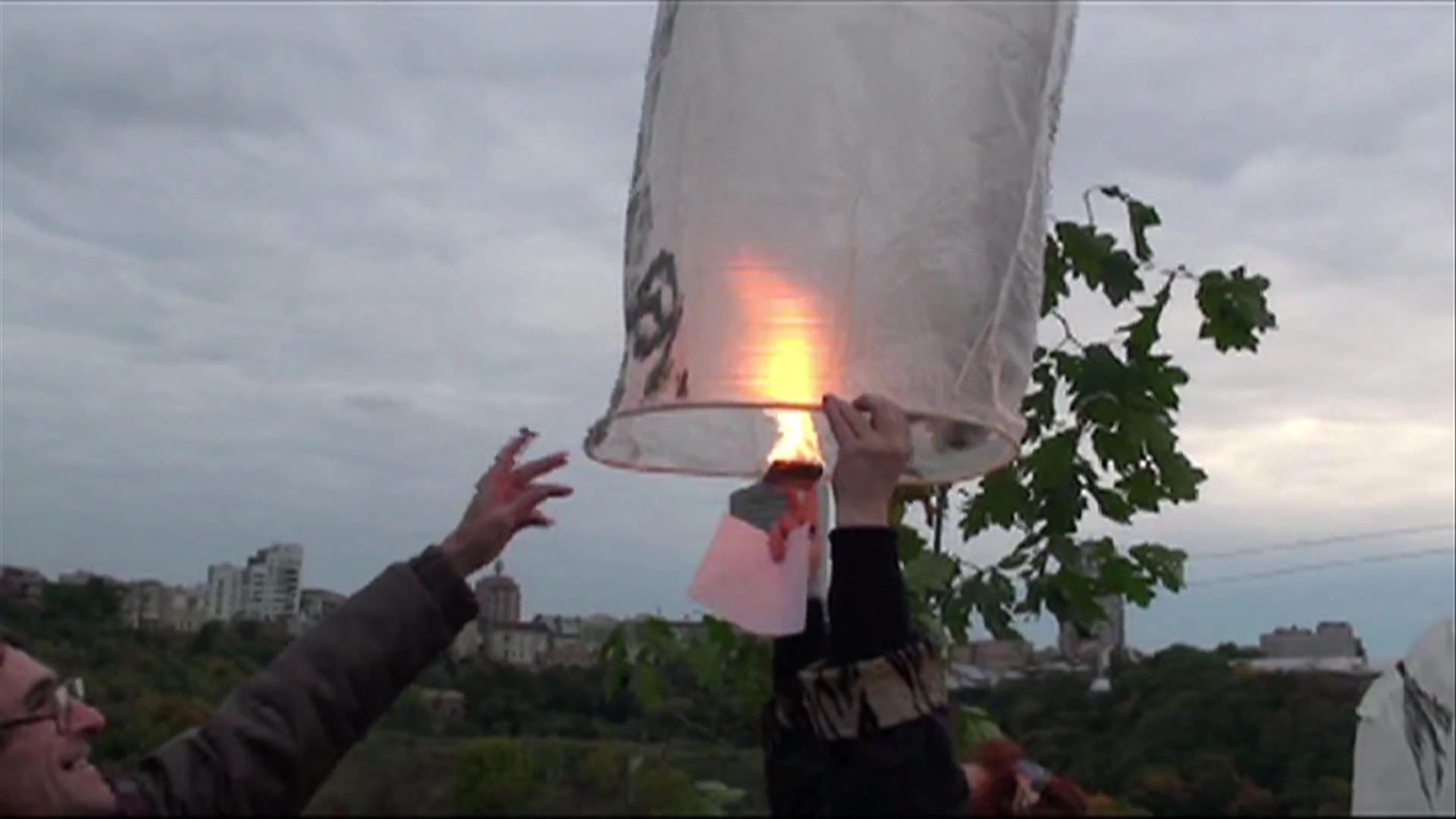
 Click to view the video
Click to view the videoOksana Chepelyk Farwell to SJYSCRAPERS II, 2010, 3:22
Farwell to SJYSCRAPERS II, 2010, 3:22
“FAREWELL TO SKYSCRAPERS!” art intervention by artist Oksana Chepelyk realized Oct 2, 2010 on Andriyivsky Uzviz in Kiev with the release of a large number of Chinese paper lanterns in the form of skyscrapers within the International Festival “The Street of the Game, The Games on the Street” (the Dialogue of Socio-Cultural Reconstruction of Andriyivsky Uzviz) supported by Goethe Institute in Ukraine. These blow away in the Kiev night sky, allowing us to see on a more poetic note the calm beauty while reflecting on how real-estate speculation affect to our daily lives.

 Click to view the video
Click to view the videoOksana Chepelyk Manifesto, 2011, 4:45
Manifesto, 2011, 4:45
is a conceptual video, made in the context of contemporary art discourse, as an expression of the artistic principles by means of video performance, realized at UCLA within Fulbright Research Program, performed by Oksana Chepelyk, Mimi Tang and Cliff Simmons. It is a reflection on the subject of «Human and its image». Special Thanks to David Wilson and Museum of Jurassic Technology.
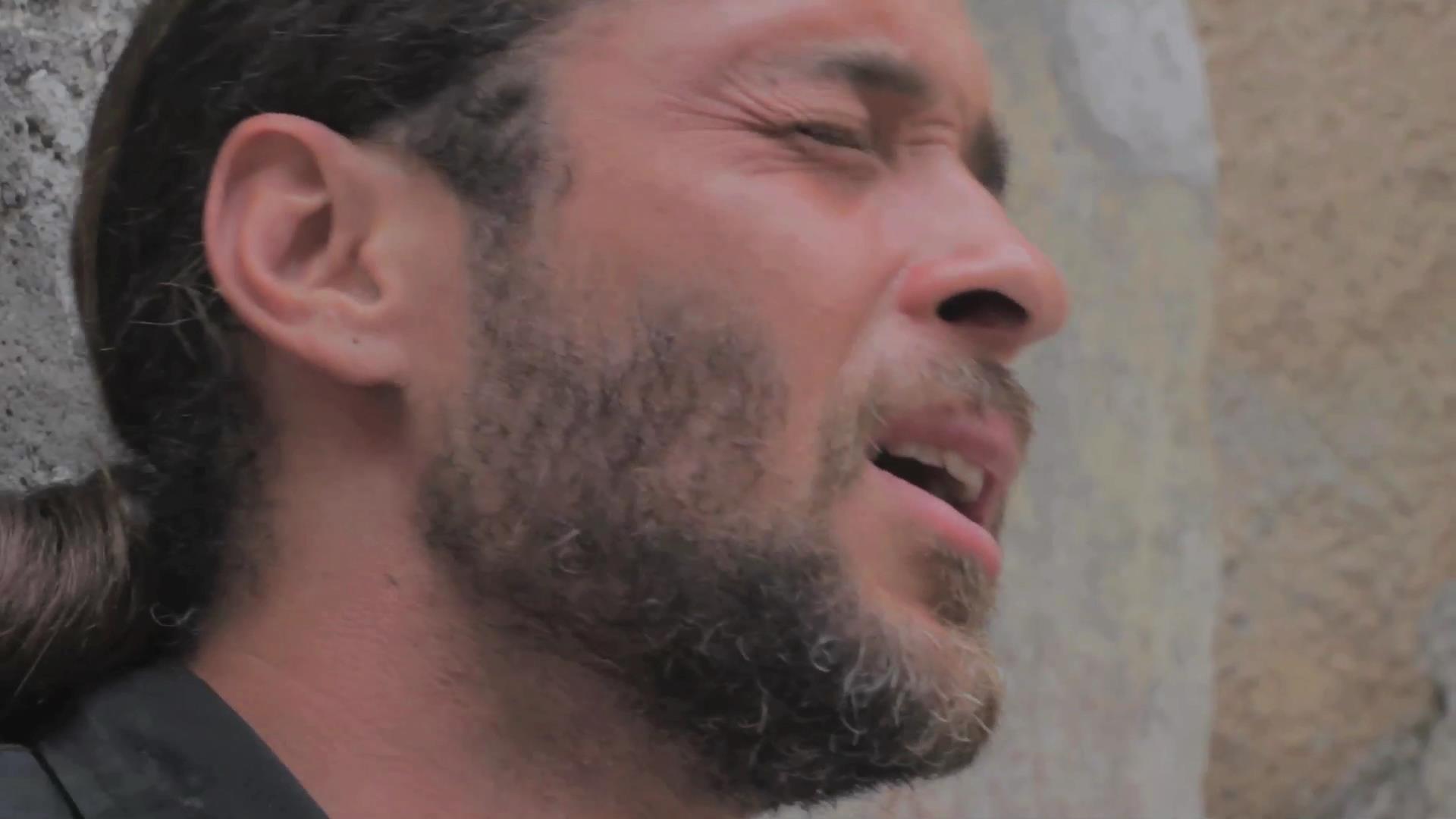
 Click to view the video
Click to view the videoOksana Chepelyk The Reborn, 2013, 1:00
The Reborn, 2013, 1:00
From ethnographic sources it is known that in remote areas in the Carpathian region there was an archaic ritual in which during delivery man sat in front of the house and went through the functions a laboring woman. “The Reborn” film is about sharing the responsibility. It is dealing with gender study research.
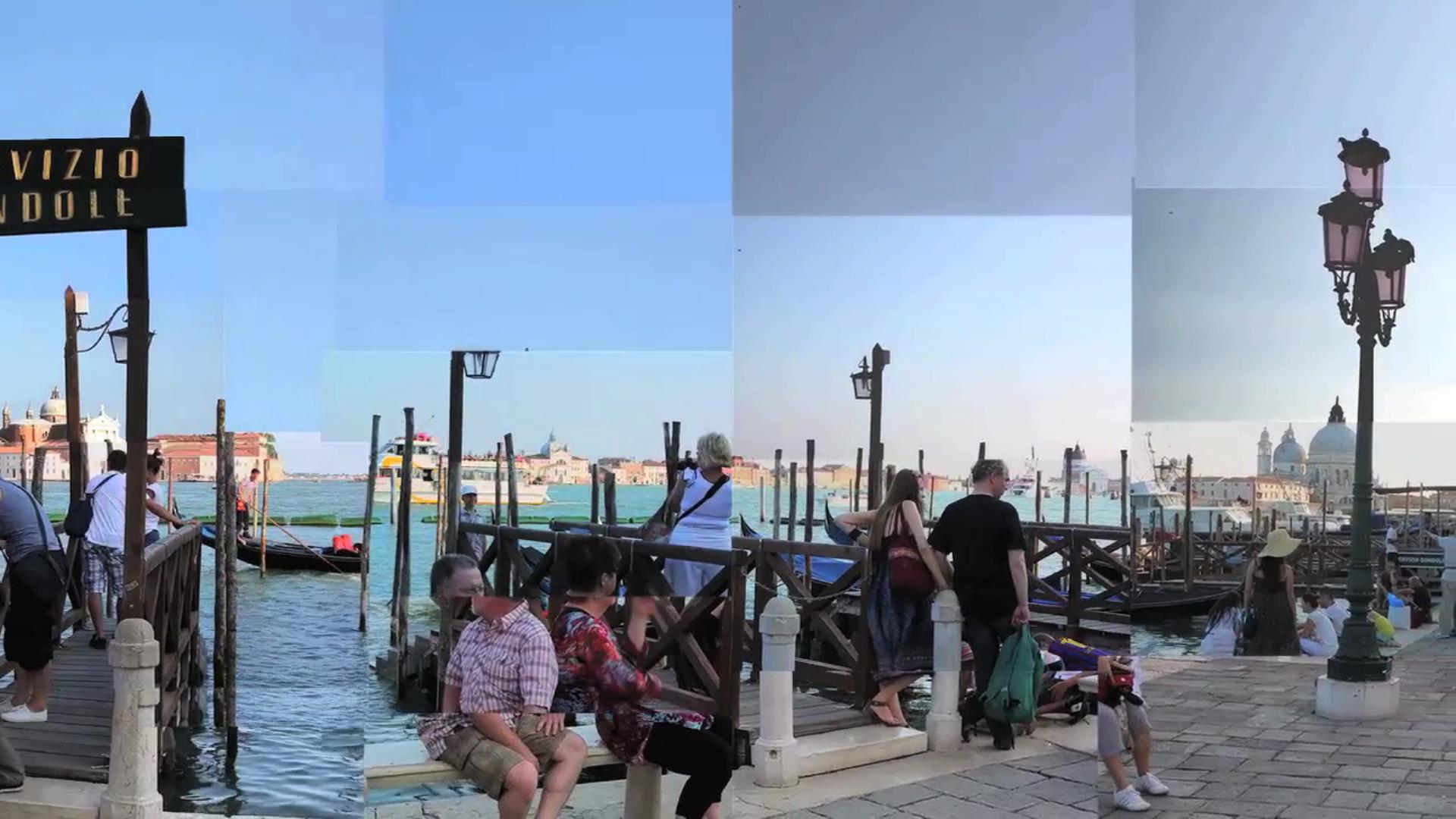
 Click to view the video
Click to view the videoOksana Chepelyk Venetian Stanzas, 2013, 5:00
Venetian Stanzas, 2013, 5:00
“VENETIAN STANZAS” is based on Joseph Brodsky poetry. The film works with space-time, science and poetry. The elements of fragmentation and (dis)continuity in film make conscious reference to quantum theory. Panoramas in film are simple manifolds.
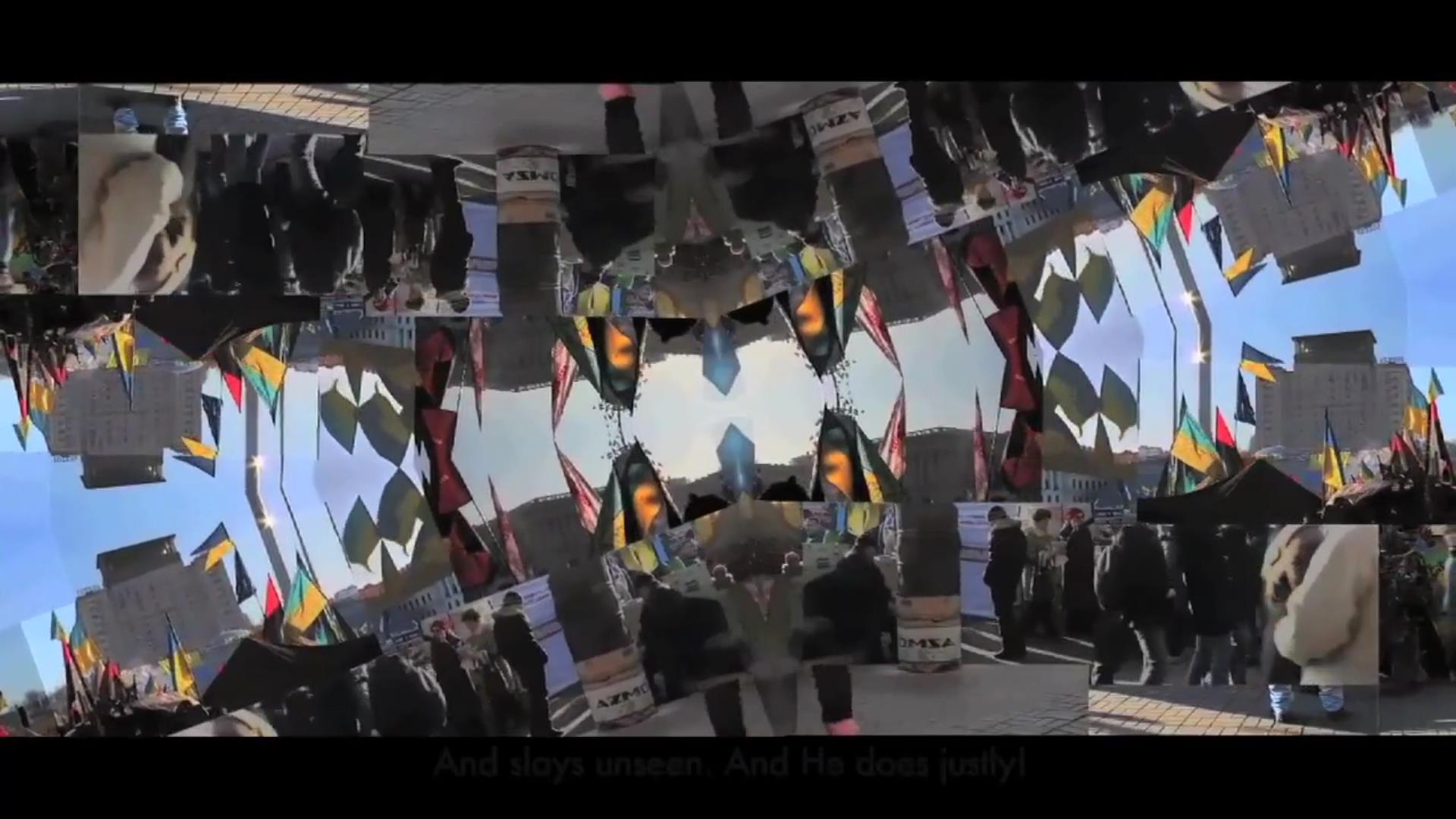
 Click to view the video
Click to view the videoOksana Chepelyk Premonition of War, 2014, 6:65
Premonition of War, 2014, 6:65
PREMONITION OF WAR is an installation made after Taras Shevchenko’s poetry HOSEA, CHAPTER XIV». It is foccussing on Kyiv Euromaidan and functioning of public space, space of freedom, of battles against repression and injustice. Visual approach refers to the experimental methodologies of children vs adult kaleidoscope that underlines the understanding of global breaks we live now. Project, fed by obscured historical events, political urgencies and documents, can act as a catalyst for the culturally charged encounters – experiences, feelings, a kind of shared breath – that materialize on the video It is referring to the global breaks we live now and shows how the peace is fragile on the background with unnoticeable growing of Russian fascism. Project is for worldwide audience. The fact that since 2014 the provision of hands of the Doomsday didn’t change because of cumulative influence of positive and negative aspects, testifies underestimation of Russian nuclear threat. Project problematizes the system itself, exposing the complexities of today’s moment. It is an appeal to the world collectively to stop the war. How many tipping points do we need before moving to reframe the world system? What role remains for art in such conditions – as a mirror of the problem, an avenue for social therapy, a project for a new reality, or the personal response of the author whose live emotion is capable of being heard over the buzz of global information? Taras Shevchenko referring to Hosea (Heb. הוֹשֵׁעַ, Ošea, ‘Salvation’, VIII century BC) a biblical Prophet of Israel and author of the book of prophecies bearing his name, made a paraphrase. Hosea lived and prophesied in Kingdom of Israel during the time of King Jeroboam II until the destruction of Israel and the destruction of its capital, Samaria. The Prophet fought against the sins, was converting the hearts of Jews to the Lord. In the biblical Book of Hosea infidelity of Israel appears to be in the form of spiritual adultery.
It belongs to Hosea, the phrase that became widely known in the Christian era, reflecting the belief in resurrection and salvation of men through the atonement of their sins by Son of Man:
“Death! Where is thy sting? Hell! Where is thy victory?” (Hosea 13:14)
A prophet reveals the immense love of God for his people. Despite all the perfidy of the people, a prophet finds the words of consolation for them, promising to them, that nevertheless they will experience the best – Messianic Age.
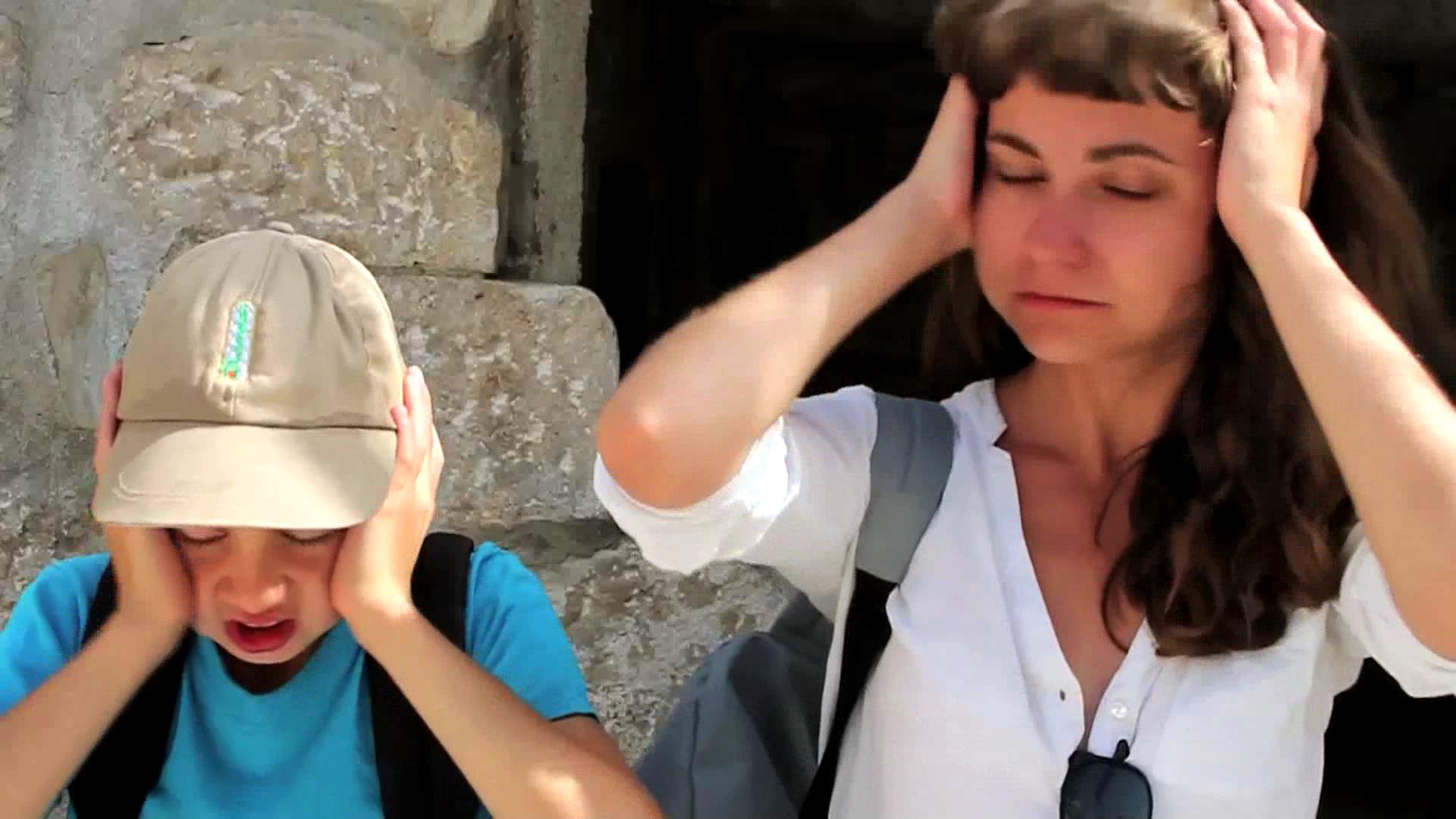
 Click to view the video
Click to view the videoOksana Chepelyk Letter from Ukraine, 2014, 7:31
Letter from Ukraine, 2014, 7:31
“Letter from Ukraine” video, fed by obscured history and political urgencies acts as a catalyst for the culturally charged encounters – a shared breath – that materialize in the performance. It is referring to the civilizational breaks we live now on the background with unnoticeable changes. It is questioning why Europe feels uncomfortable to solidarize with the victims of Russian aggression? Film is based on real events and eyewitnesses of the refugees from Donbass. Film, in which Ukraine tests its own coefficient of independence. But also the coefficient of the world independence can be fatal. Dedicated to all «deeply concerned» about war.
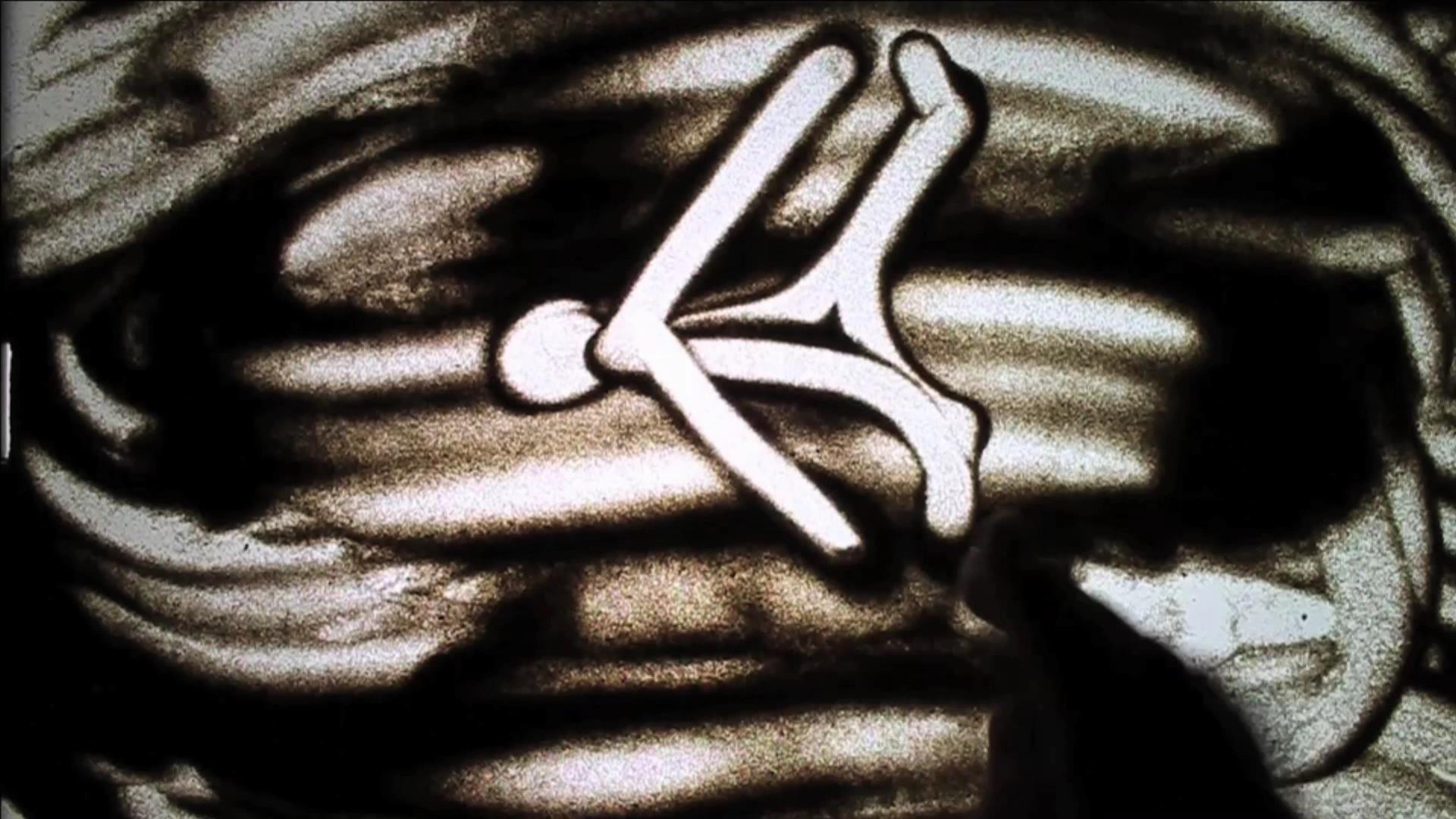
 Click to view the video
Click to view the videoOksana Chepelyk Dragon and Beauty, 2014, 8:53
Dragon and Beauty, 2014, 8:53
One day beautiful girl was noticed and kidnapped by dragon. Her refusal to marry him angered him and he locked her to a chain. To overbear the Dragon was possible, but the needle with magic power was to big to break it. But the Beauty found the way. A fairy-tale is not deprived political allusions.
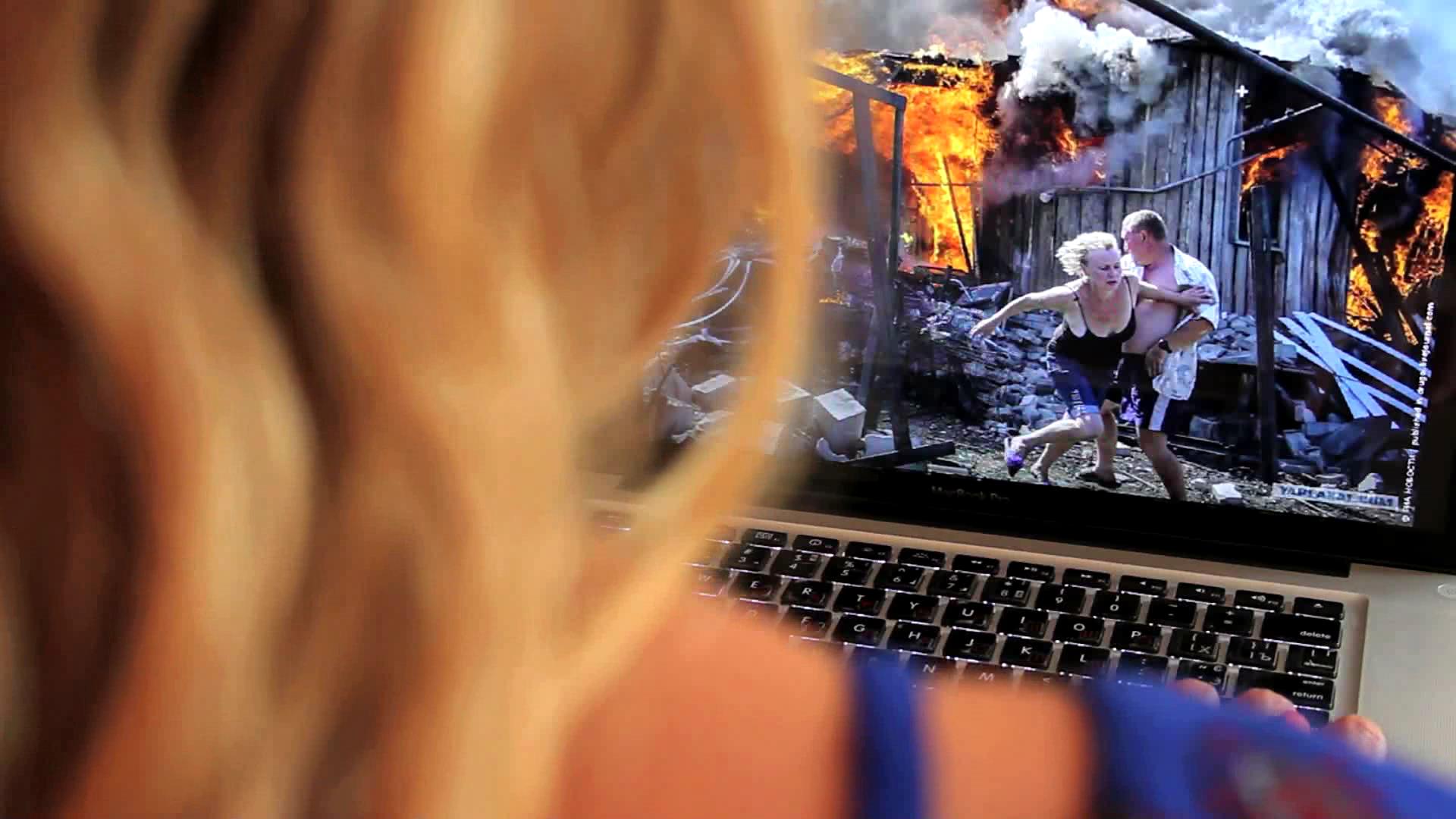
 Click to view the video
Click to view the videoOksana Chepelyk Alone, 2014, 9:49
Alone, 2014, 9:49
“Alone”, fed by obscured history and political urgencies acts as a catalyst for the culturally charged encounters – a shared breath – that materialize in the video. It is questioning why Europe feels uncomfortable to solidarize with the victims of Russian aggression? Film is based on real events and eyewitnesses of the refugee from Donbass. Art as a mirror of the problem, an avenue for social therapy, a project for a new reality, or the personal response of the author whose live emotion is capable of being heard over the buzz of global information? Dedicated to all «deeply concerned» about war.

 Click to view the video
Click to view the videoOksana Chepelyk Face to Face, 2014, 10:00
Face to Face, 2014, 10:00
“Face to Face”, fed by obscured history and political urgencies acts as a catalyst for the culturally charged encounters – a shared breath – that materialize in video. Film is based on real events and eyewitnesses of the refugees from Donbass (Ukraine) and from Nairobi (Kenya). Two women – one from Ukraine, another from Kenya sitting next to each other on the sand – speak about the circumstances of their escape to Italy. There they are learning how to live without war followed in Kenya after the presidential election of 2008 in Ukraine with Russian agression. Dedicated to all «deeply concerned» about war.
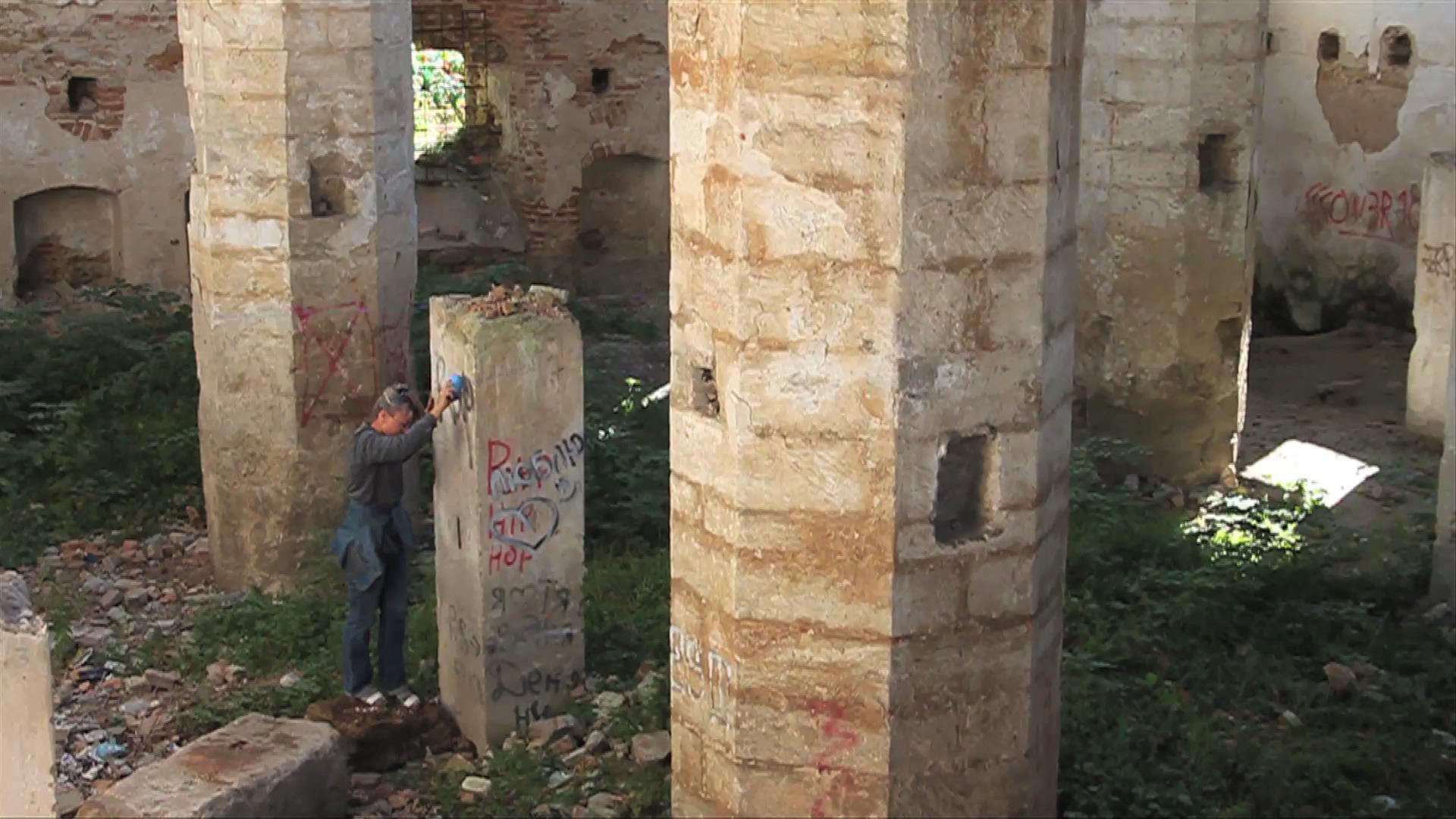
 Click to view the video
Click to view the videoOksana Chepelyk Tree of Life, 2016, 6:00
Tree of Life, 2016, 6:00
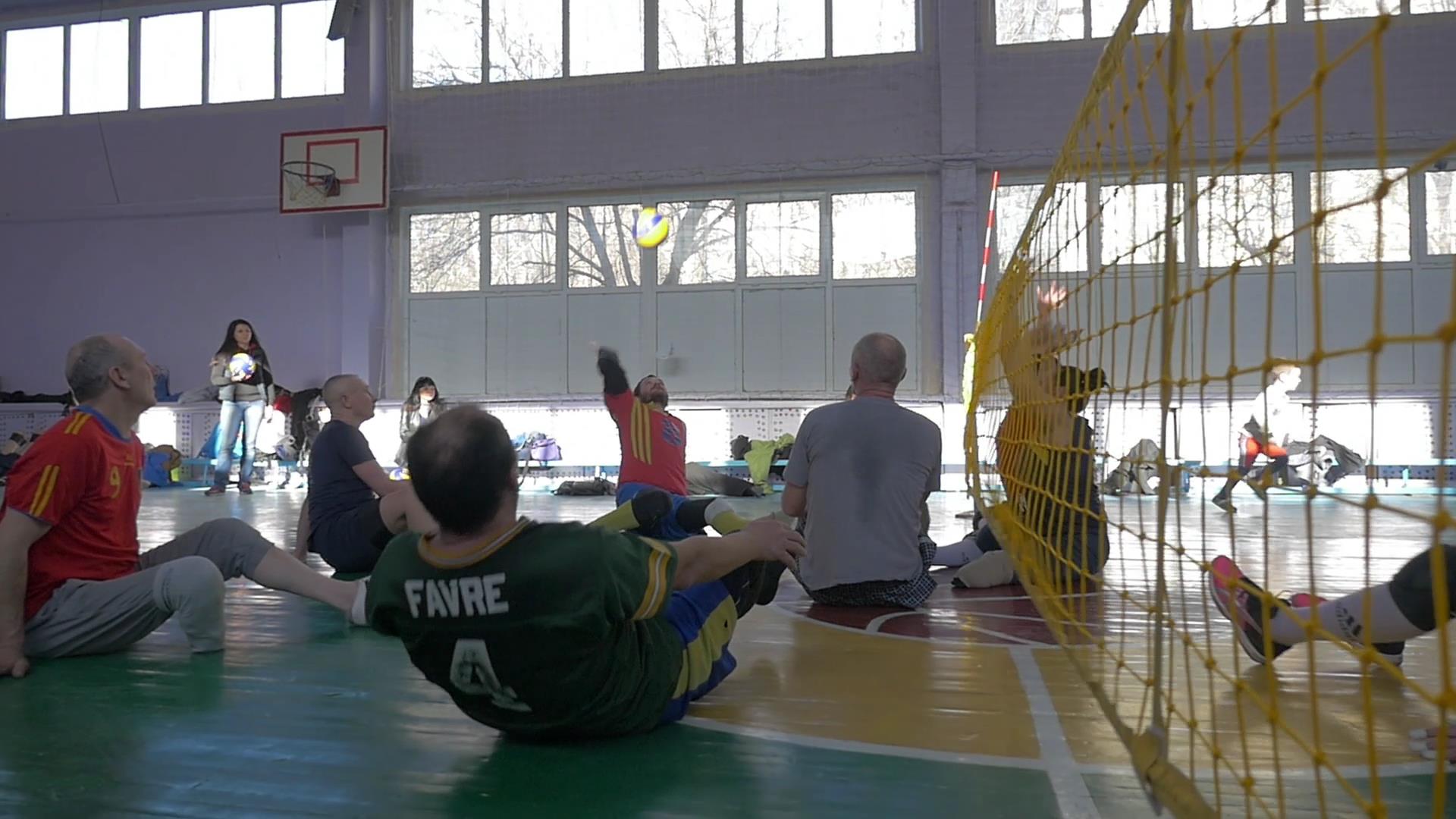
 Click to view the video
Click to view the videoOksana Chepelyk Not Simply Game, 2017, 15:07
Not Simply Game, 2017, 15:07
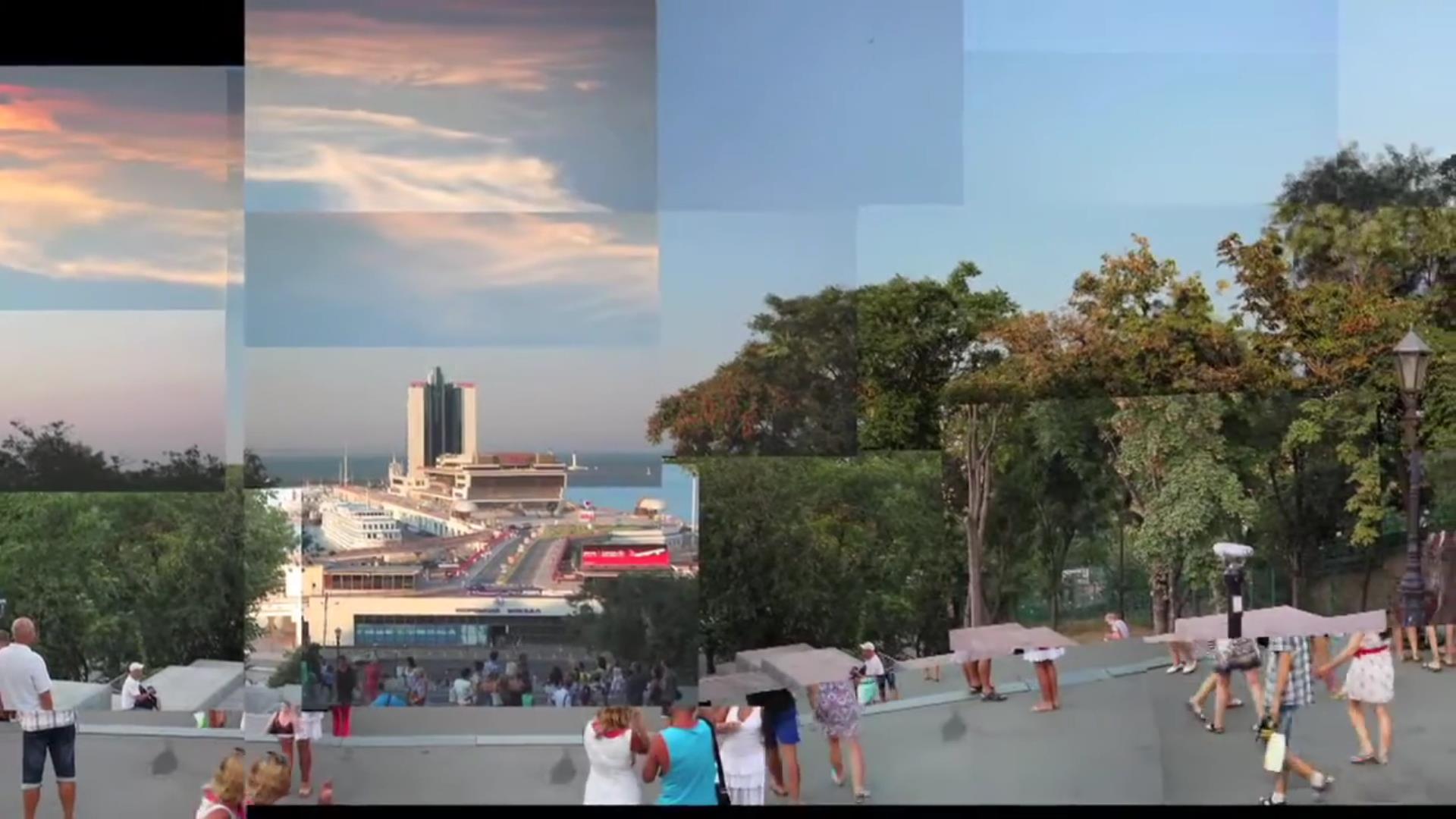
 Click to view the video
Click to view the videoOksana Chepelyk Not Simply Game, 2017, 15:07 [
Odesa Collider ir Turbulence vs Quantum Transition, 2017, 22:00
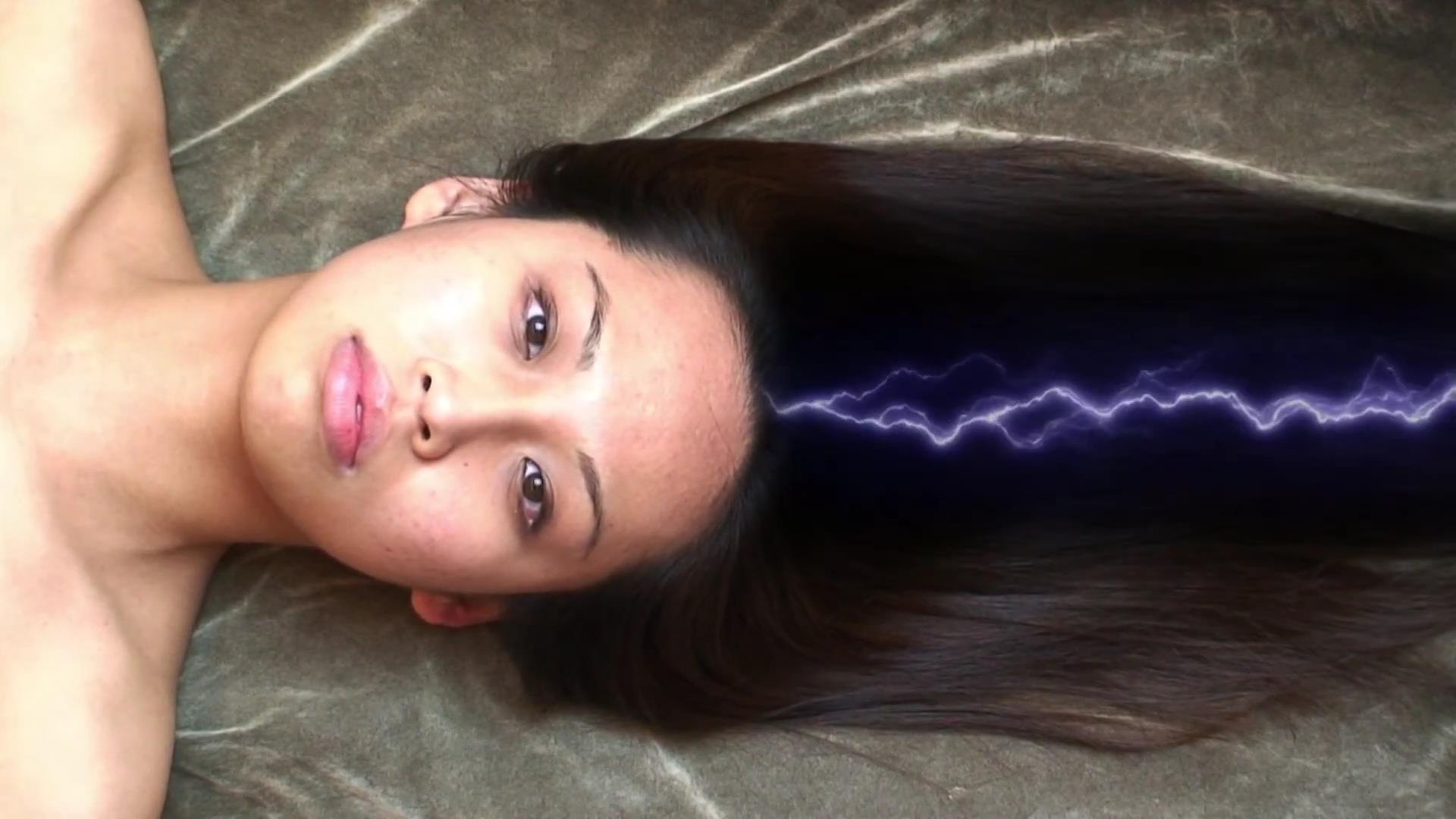
 Click to view the video
Click to view the videoOksana Chepelyk GAIA , 2011/2020 5:00
“GAIA” , 2011/2020 5:00
Video refers through gender study to the Gaia hypothesis, also known as Gaia theory or Gaia principle, proposing that all organisms and their inorganic surroundings on Earth are closely integrated to form a single and self-regulating complex system, maintaining the conditions for life on the planet. The Gaia hypothesis, named after goddess of the Earths at ancient Greek mythology, was formulated by the environmentalist James Lovelock and co-developed by the microbiologist Lynn Margulis in the 1970s. Already in the twentieth century, Vladimir Vernadsky developed theory of the Earth’s development that is now one of the foundations of Ecology. During the 1920s he published works, arguing that living organisms could reshape the planets as surely as any physical force, followed by noosphere concept.

 Click to view the video
Click to view the videoOksana Chepelyk The Ocean, 2021, 13:00
The Ocean”, 2021, 13:00
“The Ocean” is part of “The Independence Without Borders” project as a series of streams at the intersection of sound and media art, vocal and performative practices dedicated to the art study of independence in the broadest sense. The project was created in cooperation with Carbon (Ukraine) and InterAKT Initiative e.V. (Germany) with the support of the Ukrainian Cultural Foundation.
Piece reflects on “Independence” and “boundaries” in the aquatic environment of the sea and the ocean.
Independence-dependence on the ecological situation and climate change in the context of borders.
Migration processes are not only human, but primarily outside of the human being. People migrate, fleeing wars, conflicts, violence, poverty, in search of economic prosperity, environmental problems. Sea creatures migrate freely, but they are tied to their food habitat. Anthropogenic factors and climate change are leading to significant changes in food webs. The main threats to aquatic biodiversity are changes in land and sea use, expansion of urban ‘borders’, exploitation and destruction of organisms, climate change, including ocean warming, acidification, oxygen depletion, heavier and more frequent rainfall and storms, increased pollution during heavy rainfall in cities and run-off from agricultural land.
Work is based on metabolomics data. Metabolomics is a systematic study of the unique chemical ‘fingerprints’ characteristic of processes occurring in living cells of organisms useful for understanding the functioning of biodiversity and as biomarkers of effect of environmental changes. The interaction between an organism’s genome and its environment is precisely reflected in metabolomics. And studies of an organism’s metabolome in its earring can serve as an excellent probe of its phenotype, which is a product of its genotype and environment. With the metabolome measurement methodology, data is provided to form a metabolomic profile, which can be visualized as a parabola.
In this way, art can join the cognitive practices of monitoring environmental change, shaping a society responsible for a sustainable future. Therefore the focus of the project is to make visible and audible the data of environmental changes and threats to biodiversity from environmental pollution in a data-driven audio-visual work (“liquid” visual patterns, sonification and re-interpretation in music) based on metabolomics data with a development vector from aesthetics to ethics. Sonification of metabolomics data, namely of healthy Spongia lamella from Marseille and sick “Spongia Lubomirskia baikalensis” from Baikal Lake, received at IMéRA art residency in collaboration with CNRS of the Mediterranean Institute of Marine and Terrestrial Biodiversity and Ecology / Marine Station of Endoume. Special thanks for the support to Thierry Perez, Stéphane Greff, Marie Derrien, Annabelle Voorhoeve and Jean Vacelet. Microscopic video was shot with the support of the Mediterranean Institute of Oceanography in Marseille.
Project expresses the ethical basis of coexistence with nature, the paradigm of “independence” is transformed into “co-dependence”, thus realizing the “ethics of partnership”.
Art as a tool to strengthen arguments so that future solutions are much better adapted for use by marine planners and stakeholders in view of a changing world.
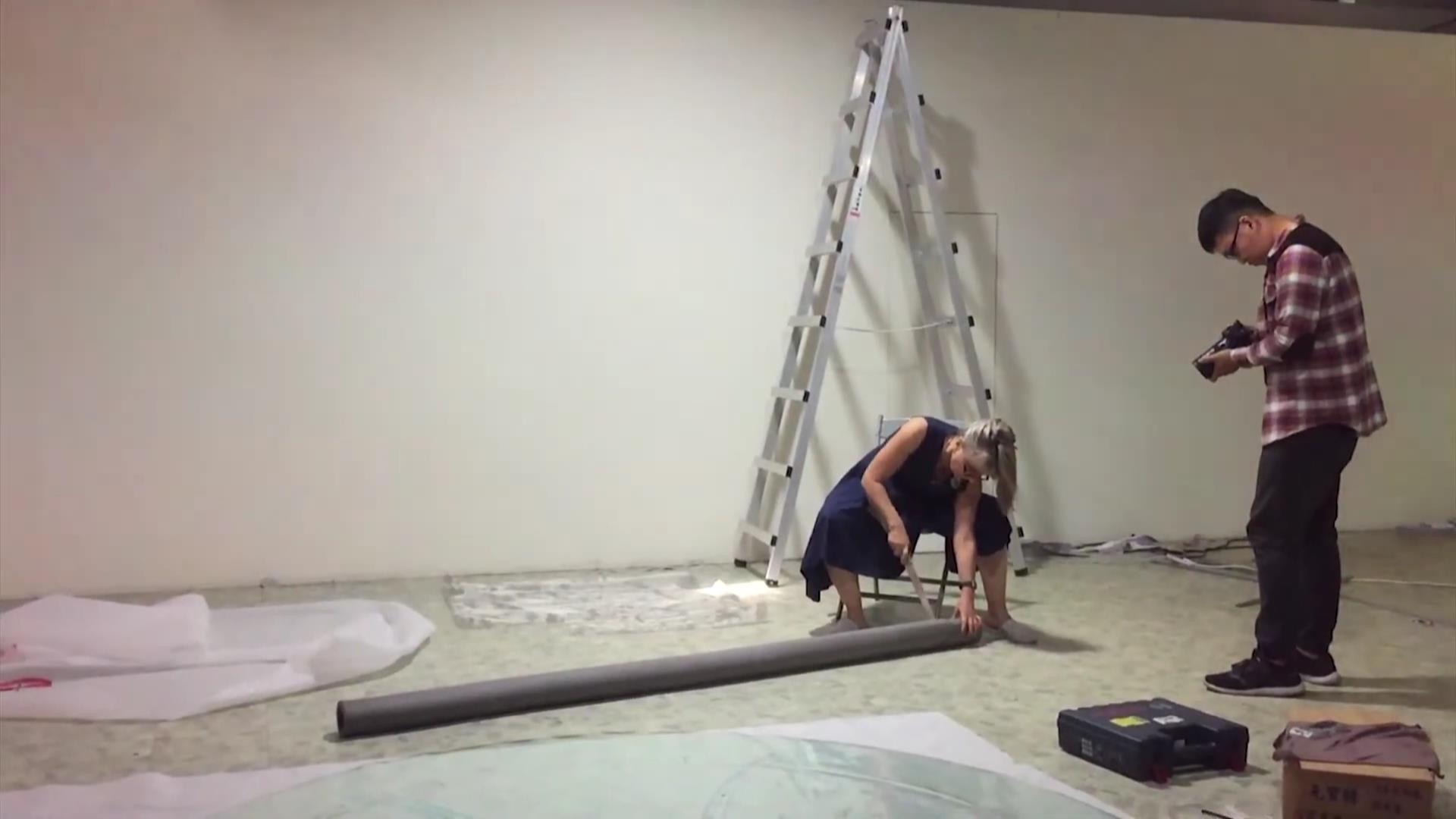
Shifting Time, 2003/2004, 6:33
MONTENEGRIN COLLIDER project documentation, 2015, 15:15
META-PHYSICAL TIME-SPACE, HD, Soulangh Tainan, Taiwan, 2018, 20:00
META-PHYSICAL TIME-SPACE, Karpathian Space, 2020, 1:35
REFRACTION OF REALITY, Korsak’s Museum of Contemporary Art, 2021, 1:00

 Click to view the video
Click to view the videoOksana Chepelyk Shifting Time, 2003/2004, 6:33
Shifting Time, 2003/2004, 6:33
“Shifting Time” video investigates the very nature of the global survey in the realm of terror with its numerous cameras, its ubiquity and its perpetual multiple flows documenting author “Terrorvision” installation. “Terrorvision” is an 8 switches cameras ring installation with the trace of the feet on a small pedestal. When the exhibition visitor standing up on the pedestal inside of circle 8 cameras capturing his face switching from one to the next (exploring dynamic circular movement around him/her). But visitor can’t notice anything and only on the next exhibition space he/she is facing his/her own picture appeared with the delay on the double screen. Are we afraid ourselves? Are we afraid The Other? What is the Face of The Other? Recognizing people from their faces has become an important task in many applications. Humans perform this task easily and robustly. The researchers explore ways to develop an automatic face recognition system that can recognize faces from still images and videos.
“Terrorvision” project is dealing with such scientific approach. This is a study of total survey depicted through the research using the technique of detournement according Guy Debord as an attempt to discover the connection of the culture of fear with the American dream so riddled with violence. The spaces function metaphorically as both a manifestation of social phenomena and a container of the imagination and creativity. Taking total survey as metaphor, the work invites us to reconsider terror of media feeding culture of fear.
The transient nature of the artists’ interventions in the space serves to question the preconceived ideas of the “surveillance camera” as a provider of security and a definer of reality. The video project reveals the mechanisms which becomes a platform for the deconstruction of usual connection, non-controlled behaviors and reinforces the phenomenon of the terrorvision perception.
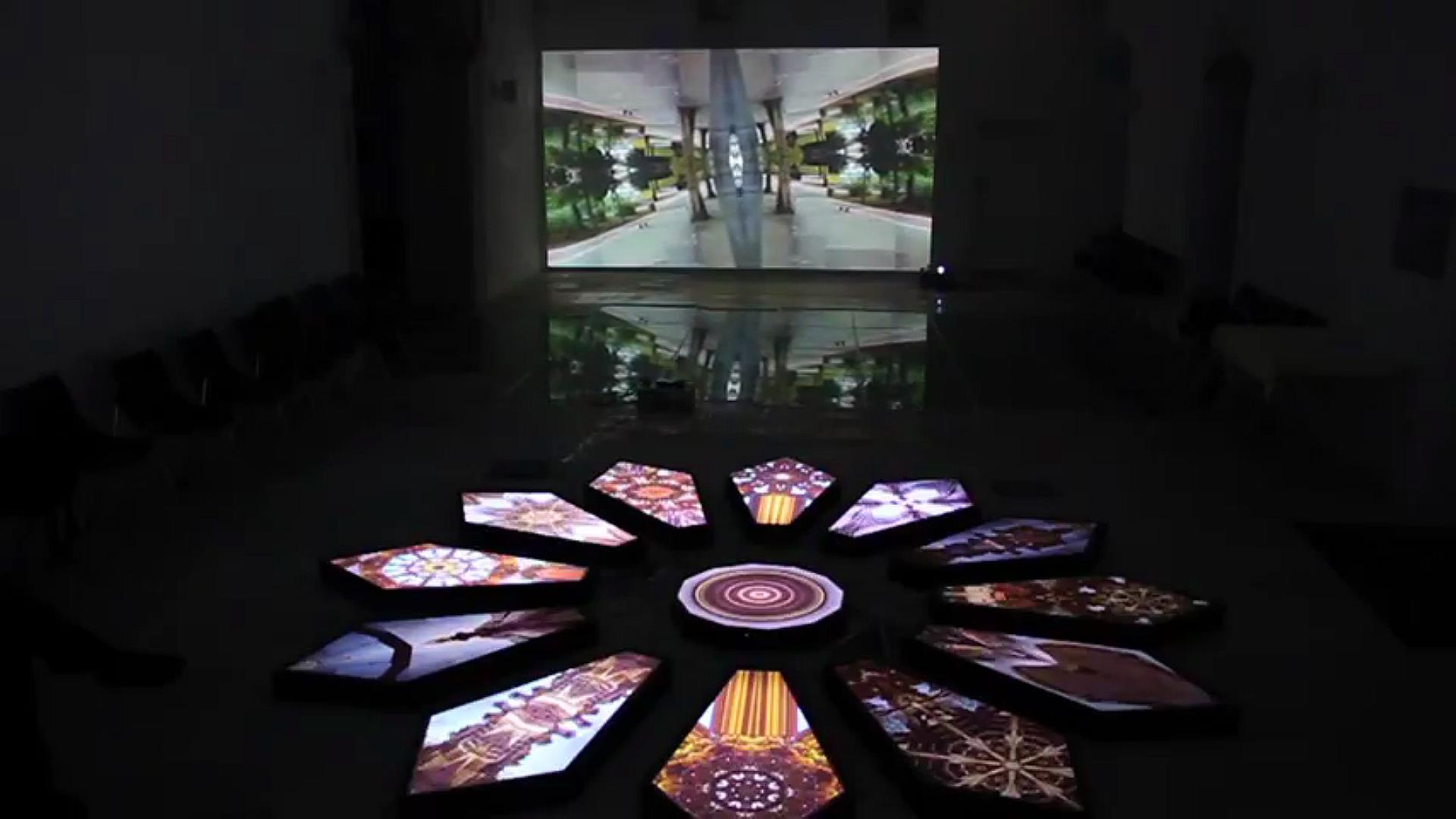
 Click to view the video
Click to view the videoOksana Chepelyk MONTENEGRIN COLLIDER project documentation, 2015 MONTENEGRIN COLLIDER project documentation, 2015, 15:15
Project “Montenegrin Collider” by OKSANA CHEPELYK, developed within DEAC, exhibited in St. Paul Church, Old Town in Kotor (Montenegro) 23.12.2015-5.01.2016.
“Montenegrin Collider” by OKSANA CHEPELYK
Documentation
The Collider project working with time, space, science, urbanism, history addresses the architecture-historical heritage of Montenegro. Collider examines the historical periods of Montenegro interpreting them within mosaic panoramic video mapping. If the latest theory of Tom Weiler and Chui Man Ho is right, the Large Hadron Collider – the world’s largest atom smasher – could be the first machine capable of causing matter to travel backwards in time. Time, one of the fundamental concepts for physics and philosophy, one of the key co-ordinates of space-time, in the project is presented by panoramic video that consists of 24 fragments of moving images, which is revolved with acceleration in an artistic collider, activated a mechanism of audio-visual jumps, where certain fragments can gradually be substituted by archival videos.
Project appeals to the interplay between micro- and macrosystems, between physical and social worlds, exploring a variety of contemporary and historical phenomena. It deals with the understanding of our space-time, researching the relation between past, present and future transformation. Visual approach refers to the experimental methodologies of children vs adult kaleidoscope that underlines the understanding of civilizational breaks we live now, where human being is immersed into cosmogonic fluid environment. Project is about complicity.
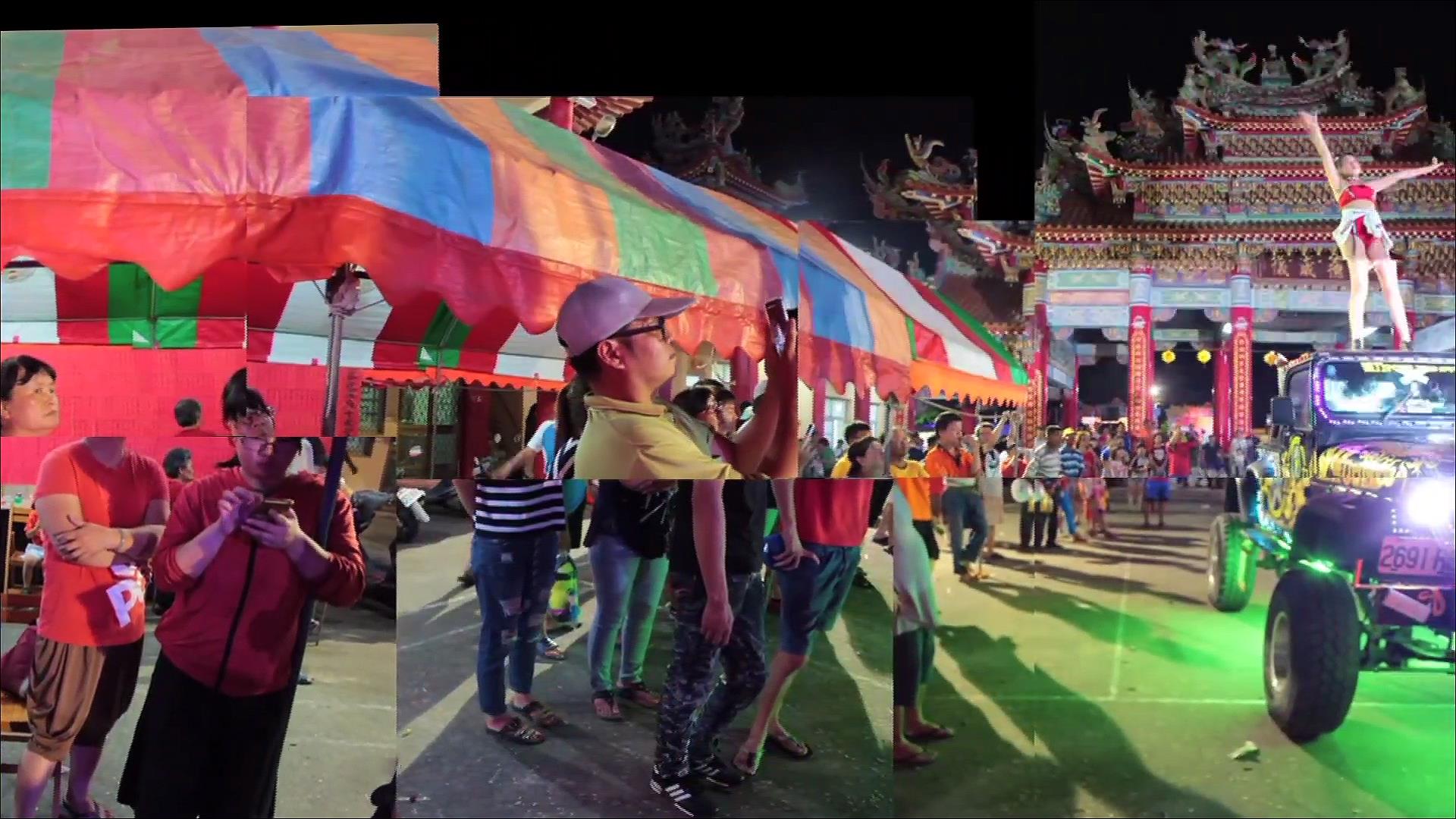
 Click to view the video
Click to view the videoOksana Chepelyk META-PHYSICAL TIME-SPACE, HD, Soulangh Tainan, Taiwan, 2018, 20:00

 Click to view the video
Click to view the videoOksana Chepelyk META-PHYSICAL TIME-SPACE, HD, Soulangh Tainan, Taiwan, 2018, 20:00
META-PHYSICAL TIME-SPACE, HD, Soulangh Tainan, Taiwan, 2018, 20:00
“Meta-Physical Time-Space” project by Oksana Chepelyk (Ukraine)
Sound by Rico Graupner (Germany)
23 August – 16 September 2018 at Gallery A 13, Soulangh Cultural Park in Tainan, Taiwan.
Exhibition was produced during AIR in Tainan 2018 program at Soulangh Artist Village.
“Meta-Physical Time-Space” project by Oksana Chepelyk, 2018. My work offers a dialogue between conceptions of spatial experience and the reformatting of space/time relationships from video to immersive environments. It is a series of video works, where human being is immersed into cosmogonic fluid environment, referring to Mark Hansen’s idea of fluidity (“New Philosophy for New Media”), as the flow of the Universe. This principle allows to research so called “Interesting times”, catching fluidity of the unnoticeable changes we live now. With Moebius I approach an ancient symbol of Ouroboros depicting a serpant or dragon eating its own tail. In modern time it symbolizes introspection, the eternal return or cyclicality, the infinite cycle of nature’s endless creation and destruction, life, and death. The transitional change could be an explanation of hybrid nature of Taiwanese culture easily mixing Easter and Western approaches. A time-space in the project is presented by video panoramas (as a reference to traditional Chinese panorama painting), that consists of 24-60 fragments of moving image, which is revolved, activating a mechanism of audio-visual “transmutations” (term by physicist Marie Curie). It appeals to the concept of time, where the past is permanently re-arising, shaping the future. The interplay between micro- and macrosystems, between physical and social worlds explores a variety of contemporary and historical phenomena. A panoramic presentation of the Taiwanese ceremony, where multiple events coexist in the row of moving imagery: mystical, magical, real and virtual in the same time, challenges the role of ritual in contemporary world. The Meta-Physical Space-Time project focuses on survival scenarios for the planet in the current turbulent reality of propaganda and post-truth to offer critical approaches. The ritual provides a person with collective action, removing from the zone of his/her fears and anxieties. A project about the current uncertainty and fears of today human in the time of the new reality of algorithmic society. On the one hand, the joint performance of social rituals affirms unity, gives the opportunity to feel their involvement in the community and its life, to create a group identity that following an idea that is also an ideal. According to Mary Douglas, rituals “serve both to express faith and commitment to certain symbolic systems.” Rituals are subject to regulations and hierarchies, and also serve as tools for mass management. And today, this function of the ritual correlates with the influence of social media. We perform rituals, make sacrifices and believe that everything will be fine. After all, the rituals of the people’s will are agreed upon at the highest level. Only the literal realization of fairy tales is impossible. Therefore, like real daffodils, we protect ourselves from reality through idealization and devaluation. Today there are rituals of initiation, social, political, crisis, calendar, corporate, magical, religious, etc. Ritual culture is based on a constantly renewed holistic picture of the world, while classical European culture is focused on discreteness. The principle of equal behavior, immutability and obligation for all members of the team has a self-sufficient nature in the culture of the ritual type. Ritual is here practically the only syncretic means of alienation, preservation and restoration of ancestral knowledge, the primary tool of development of the “collective unconscious”. In classical European culture, the subject of knowledge is a person who stood out from the clan. Thus, the classical European culture is associated with the development of individual consciousness and gives many patterns of behavior, developing the full range of possibilities in relation to the norm. Today, the individualistic principles of consciousness allow gigantic resources and technological means to be directed for their own benefit and to the detriment of many people.
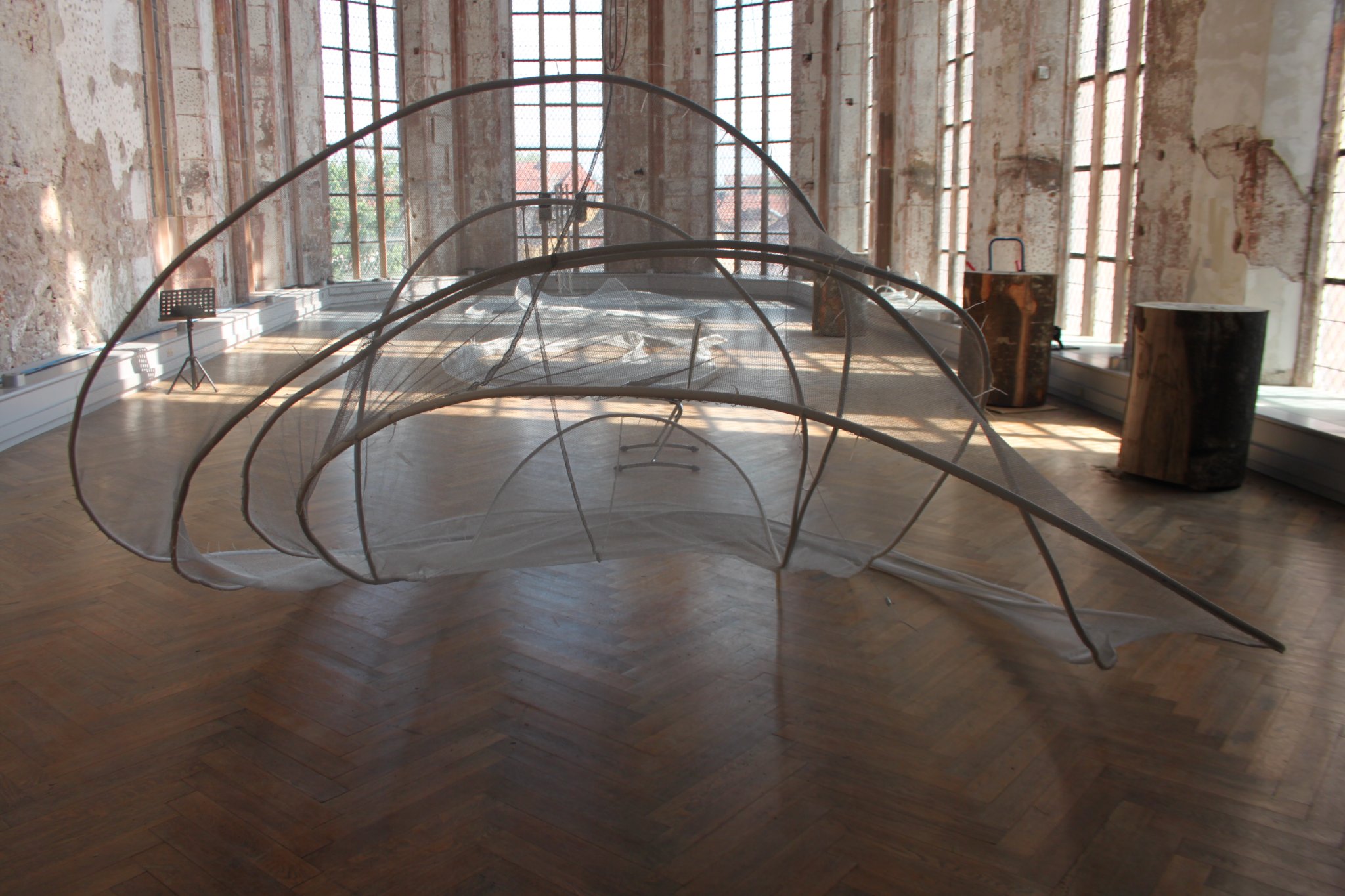
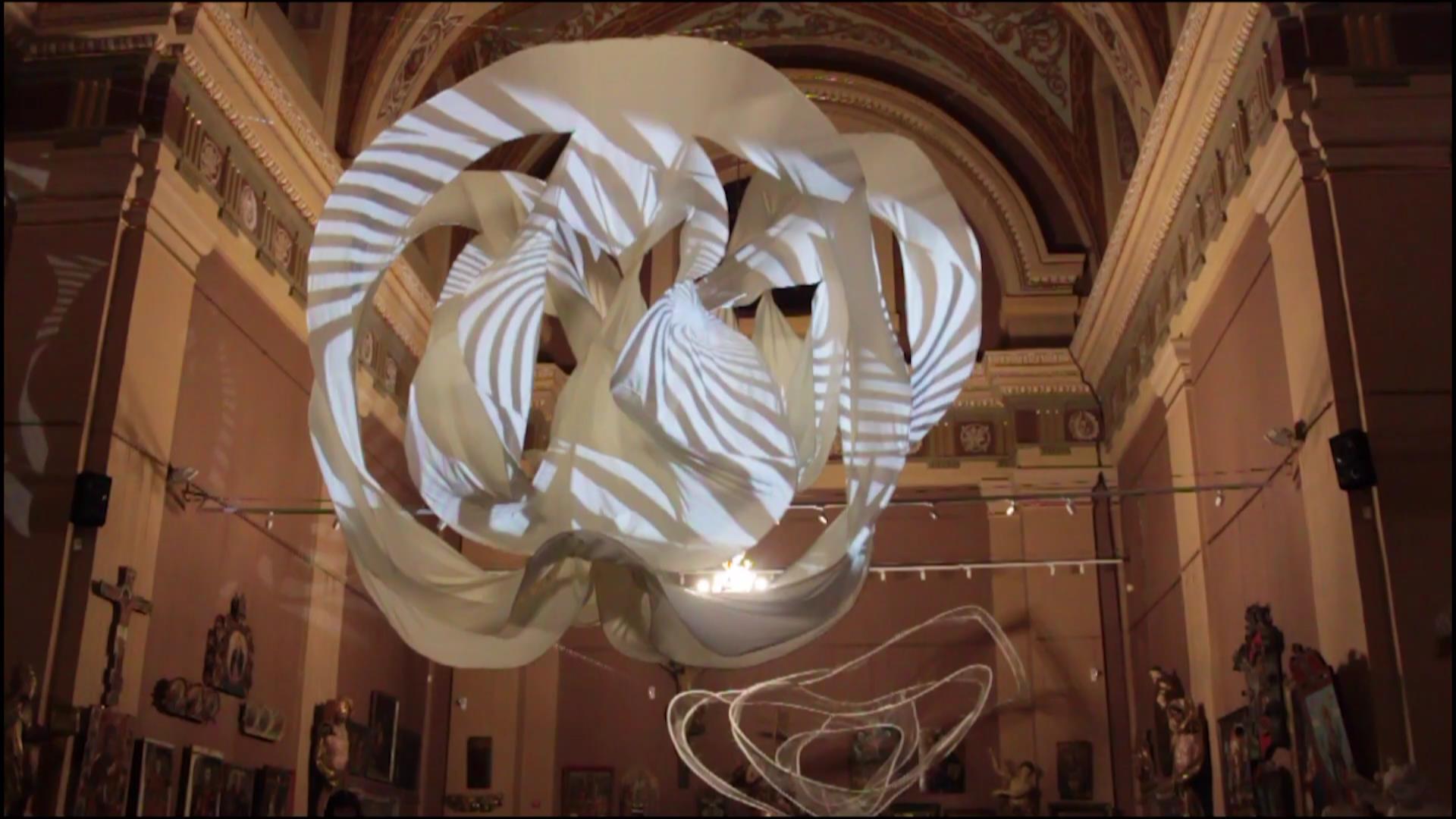
 Click to view the video
Click to view the video
Oksana Chepelyk META-PHYSICAL TIME-SPACE, Karpathian Space, 2020, 1:35
META-PHYSICAL TIME-SPACE , Karpathian Space, 2020, 1:35
“Meta-Physical Time-Space” – Project offers a dialogue betwee conceptions of spatial experience and the reformatting of space/time relationships from video to immersive environments. It is a series of works concerning spatial form of moving imagery and site-specific installation, where human being is immersed into cosmogonic fluid environment, referring to Mark Hansen’s idea of fluidity (“New Philosophy for New Media”), evidently based on the Tao as the flow of the Universe. This principle allows to research so called “Interesting times”, catching fluidity of the unnoticeable changes we live now. Project refer to the concept of dualism, to the eternal return or cyclicality, the infinite cycle of nature’s endless creation and destruction, day and night, life and death.
A time-space in the project is presented by video panoramas (as a reference to traditional panoramіс painting), that consists of 24-60 fragments of moving image, which is revolved, activating a mechanism of audio-visual “transmutations” (term by physicist Marie Curie). Through the spatial ideas project appeals to the physics search for Universe understanding. It appeals to the concept of time, where the past is permanently re-arising, shaping the future.
The project is about complicity. It raises the question: is a person a particle in the system of accelerators of global forces, or the energy of interaction investigating new values, new forms of thought and new ways of existence in the world – insisting that ‘another world is possible’.
Presentation of immersive environment, which at the same time combines cosmic and divine space, strengthens the thinking about the transcendental and existence of human being. In immersive space, everything appears as a single metaphysical space-time, where multiple events coexist in the row of moving imagery: mystical, magical, real and virtual.
The interplay between micro- and macrosystems, between physical and social worlds explores a variety of contemporary and historical phenomena.

 Click to view the video
Click to view the videoOksana Chepelyk REFRACTION OF REALITY, Korsak’s Museum of Contemporary Art, 2021, 1:00
REFRACTION OF REALITY @ Korsak’s Museum of Contemporary Art, 2021, 1:00
The project ‘Refraction of reality’ is continuing author’s visual experiments, which have begun in projects ‘Collider’ and ‘Metaphysical Space-Time’, where the science of quantum physics and searches for Universe understanding, crosses with civilization’s cataclysms, which is happening to the world nowadays.
Refraction in physics is the refraction of light rays, which is manifested in the imaginary displacement of distant objects, and sometimes in the imaginary change of their shape and / or gradual change in the direction of sound oscillations with wave propagation in a medium with variable physical characteristics.
Refraction in astronomy – the imaginary displacement of the celestial body, which occurs due to the refraction of rays, light in the Earth’s atmosphere.
Refraction in physiology – is an ability of the optical system of an eye to refract the light rays, to change their direction.
The project explores the refraction of reality vs social myopia, where myopia is the type of refraction, that indicates nearsightedness. The project refers to social myopia.
The Urgent need to follow the crucial mutations, due to changing perceptions of the modern world, requires referring to the context of critical thinking of the ХХІ century. The ‘Refraction of reality’ project deals with issues of ‘liquid modernity’ (Zygmunt Bauman) in the era of algorithm, when uncertainty becomes a constant and fluidity – a new urgency. The project “Refraction of Reality” deals with the current uncertainty and fears of modern man in the period of the new reality.
The project presents a multimedia exhibition-trilogy with spacial installations, which explores society in the three phases: in the context of science, technology, and modern challenges, examining a new paradigm of human existence on Earth.
In the era of mass interface of man and machine, when human activity is reduced to interactivity with the screen, and external and internal, subject and object began to flow into each other on the topological model of the Mobius strip, unimpeded replication of subconscious phantasms for growing new humanity the basis of a new cultural and anthropological matrix, largely responsible for the generation of illogical structures of the social world.
Reflecting on these issues, we actualize our own critical thinking, directing the efforts to the most transparent analysis of the situation in which we find ourselves, a situation complicated by the Covid-19 pandemic, which has become another argument in the process of minimizing human rights and freedoms in favor of total control and manipulation based on universal fear. Our wanderings through the technocratic labyrinth continue, but, nevertheless, we hope to see the light at the end of the tunnel, which will lead us to the space of balanced existence of natural and artificial, real and virtual, human and technological.
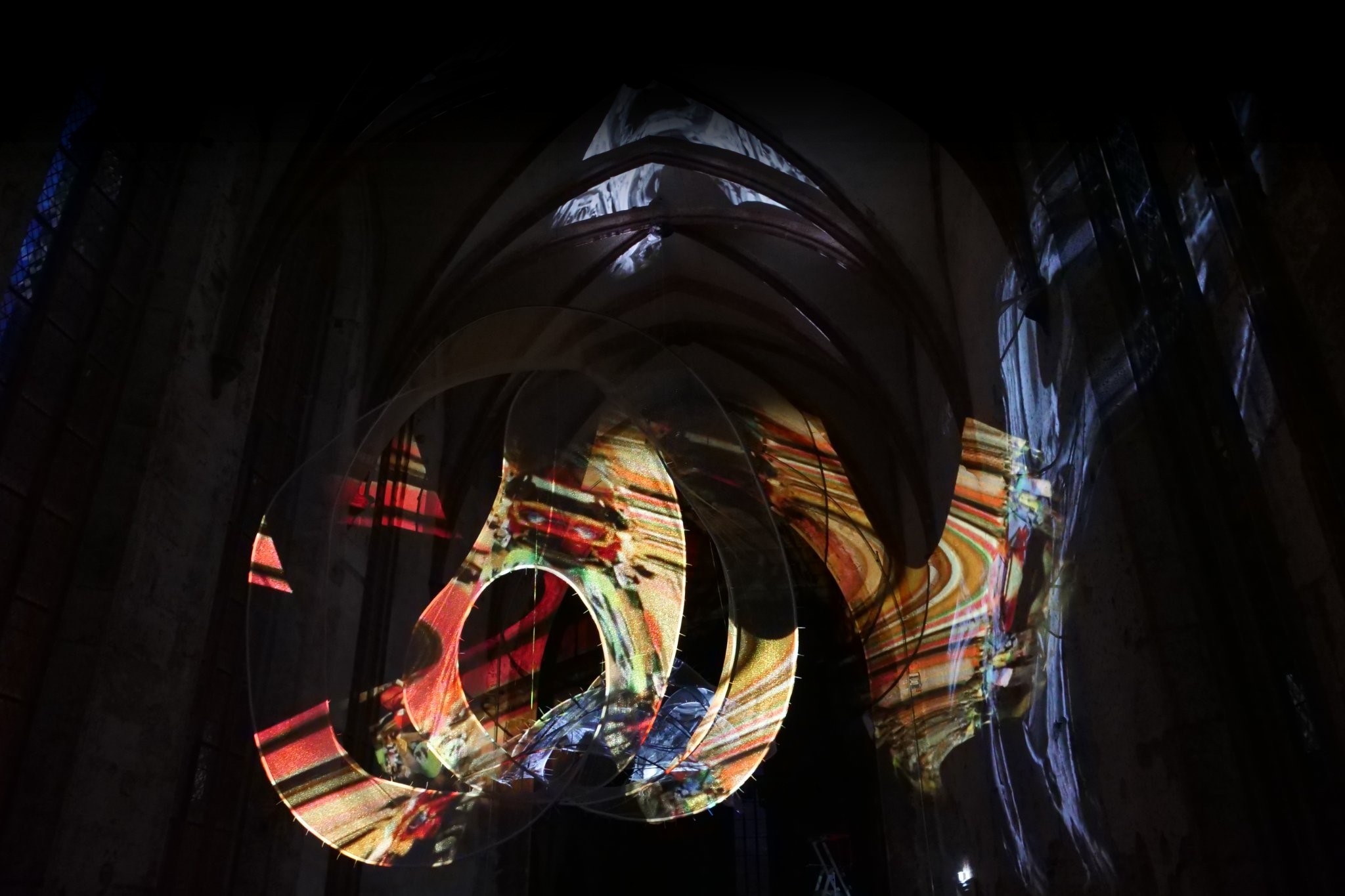
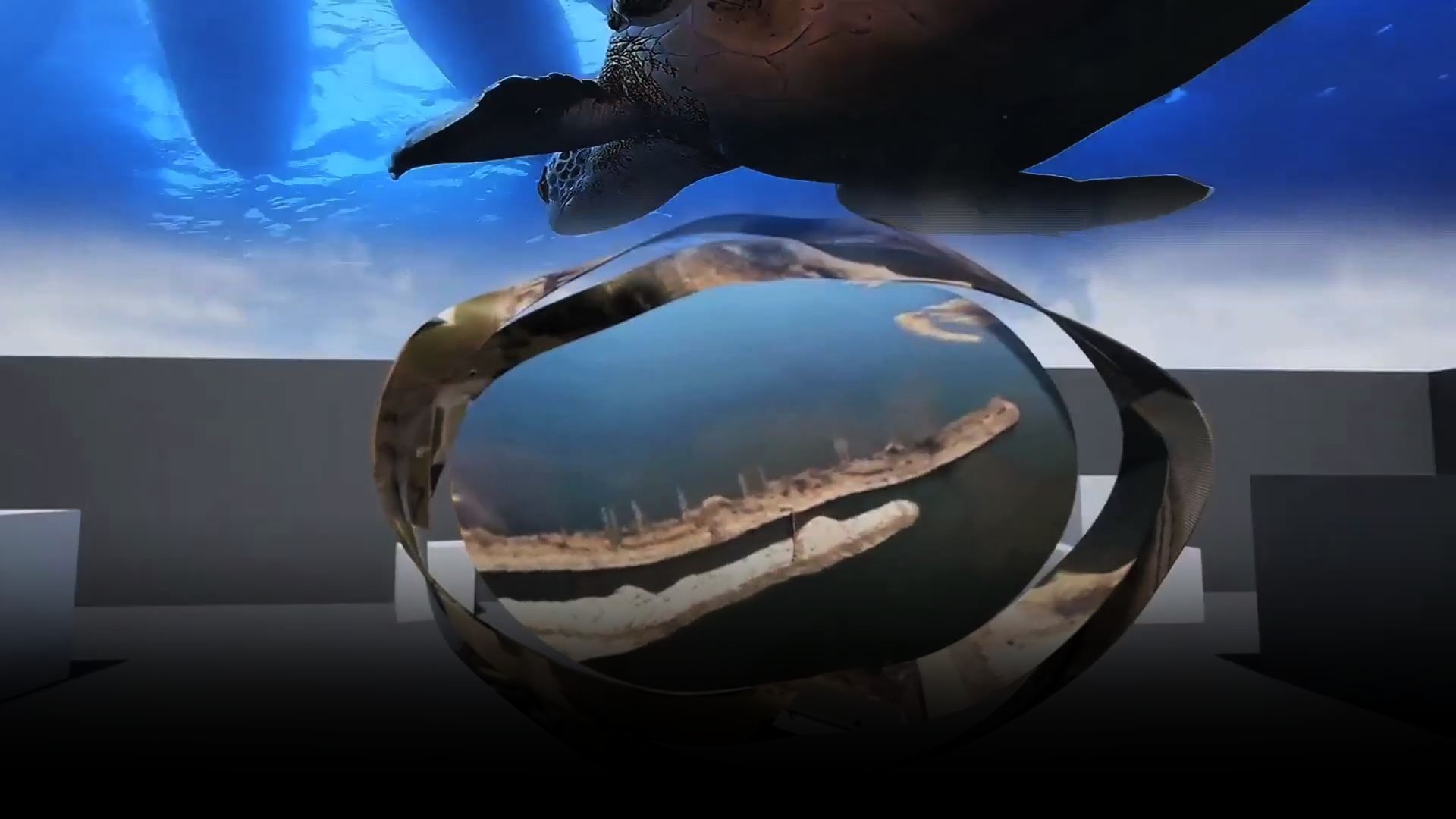
All Videos
INEVITABLE OBVIOUS”, 53 min, 1998
“EVIDENTLY UNAVOIDABLE”, 35 min., 1998
5 video fragments – 5 minutes by Oksana Chepelyk
“DEAF-MUTE CHORUS”, DVD, b/wh, 5 min., 1998-2004
“LEADER’S FAVOURITE TOYS”, Beta SP, col., 15 min., 1998 (AIDO AWARD)
“VIRTUAL SEA TOWER”, DVD / mini DV, color, 5 min., 2000
“INTRODUCTION“, 9:50 min., 2000.
“CHRONICLES OF FORTINBRAS”, 35 mm, 30 min., 2001
“URBAN MULTIMEDIA UTOPIA”, 10 min., 2002 (WERKLEITZ AWARD)
“SHIFTING TIME” 6:33 min. based on “Terrorvision” installation, 2003-2004
“VIRTUAL NOOSPHERE” 13:21 min., 2003-2004
“TEXTUAL GENE”, 5 min, 2004
“POCHATOK” / “ORIGIN”, 6:43 min., 2005.
“CHERNOBYL’ FAIRY-TALE”, 9 min., 2006.
“GENESIS” 3 min. 2004-2007.
“FAST CLONING” 1:04 min., 2007.
“GENOME”_sketch for mapping, 10:43 min.
“REAL MASTER-CLASS: 3d episode” 20 min., 2008
FAREWELL TO SKYSCRAPERS! – I, 4:26 min., 2010
“FAREWELL TO SKYSCRAPERS! – II 3:22 min., 2010
“CIRCUS”, 10:23 min., 2010.
“THE OTHER LIFE”, 10:06 min., 2010.
“MANIFESTO”, HD, 4:45 min., 2011,
“GULLIVER”, HD, 6 min., 2012
“ANGUILLARA GOES TO THE MILKY WAY”, HD, 6:31 min., 2012
“NOVA SIRIN”, HD, 5 min., 2013
“PIAZZA DEL POPOLO”, HD, 9:52 min., 2013
“THE REBORN”, HD, 7:57 min., 2013
“IN THE SHADE OF WHITE ACACIAS”, HD, 85:14 min., 2013
“JORDAN”, HD, 2014 – documentation, 5 min. digest version, 7-channel installation
“COLLIDER” (Dallas, LA, Moscow, Kyiv), 7-channel installation, HD, 26:51, 2012
“COLLIDER: Kyiv case study“, HD, 14:44, 2013
“COLLIDER_100: Sarajevo 1914_1992”, HD, 25 min., 2013
“COLLIDER_100: Kyiv 2014”, HD, 22:29 min., 2014
“VENETIAN STANZAS”, HD, 5 min., 2013 (Cinemadamare Award Venice IFF)
“PREMONITION OF WAR” HD, 6:56 min., 2014.
Full length cycle “WOMAN AND WAR” (2014), 74:54 min.:
“PRAY FOR UKRAINE”, HD, 9:30 min., 2014
“LETTER FROM UKRAINE”, HD, 7:31min., 2014
“THE SACRIFICE”, HD, 9:14 min., 2014
“LETTER FROM CRIMEA”, HD, 9:12 min., 2014
“DRAGON AND BEAUTY”, HD, 8:53 min., 2014
“ALONE”, HD, 9:49 min., 2014
“LIFE IS BEAUTIFUL”, HD, 10:19 min., 2014
“FACE TO FACE”, HD, 10:23 min., 2014
“MONTENEGRIN COLLIDER” project documentation, 2015m 15:00
“ODESA_COLLIDER, or Turbulence vs Quantum Transition”, HD, 2017
“TREE OF LIFE”, HD, 6 min., 2016
“CITY CODE”, HD, 31:50 min., 2017
“SLOVIANSK COLLIDER”, HD, 1:04:51 min., 2017
“NOT SIMPLY GAME”, HD, 15:07 min., 2017
“NOT SIMPLY PLAY. Episode II”, HD, 10:42 min., 2017
“THE WATERS COME INTO MY SOUL”, HD, 3:01 min., 2018
“Meta-Physical Time-Space”, Taiwan, 2018, 20:00
“META-PHYSICAL TIME-SPACE”, HD, Soulangh Tainan, Taiwan, 20 min., 2018
“META-PHYSICAL TIME-SPACE”, Karpathian Space, 1:35 min., 2019
“GAIA” HD, 5 min., 2011/2020
“MARIUPOL COLLIDER”, HD, 2 min., 2020
“VR COLLIDER”, 6:48 min., 2020
“REFRACTION OF REALITY”, Korsak’s Museum of Contemporary Art, 1 min., 2021
“THE OCEAN”, HD, 13 min., 2021.

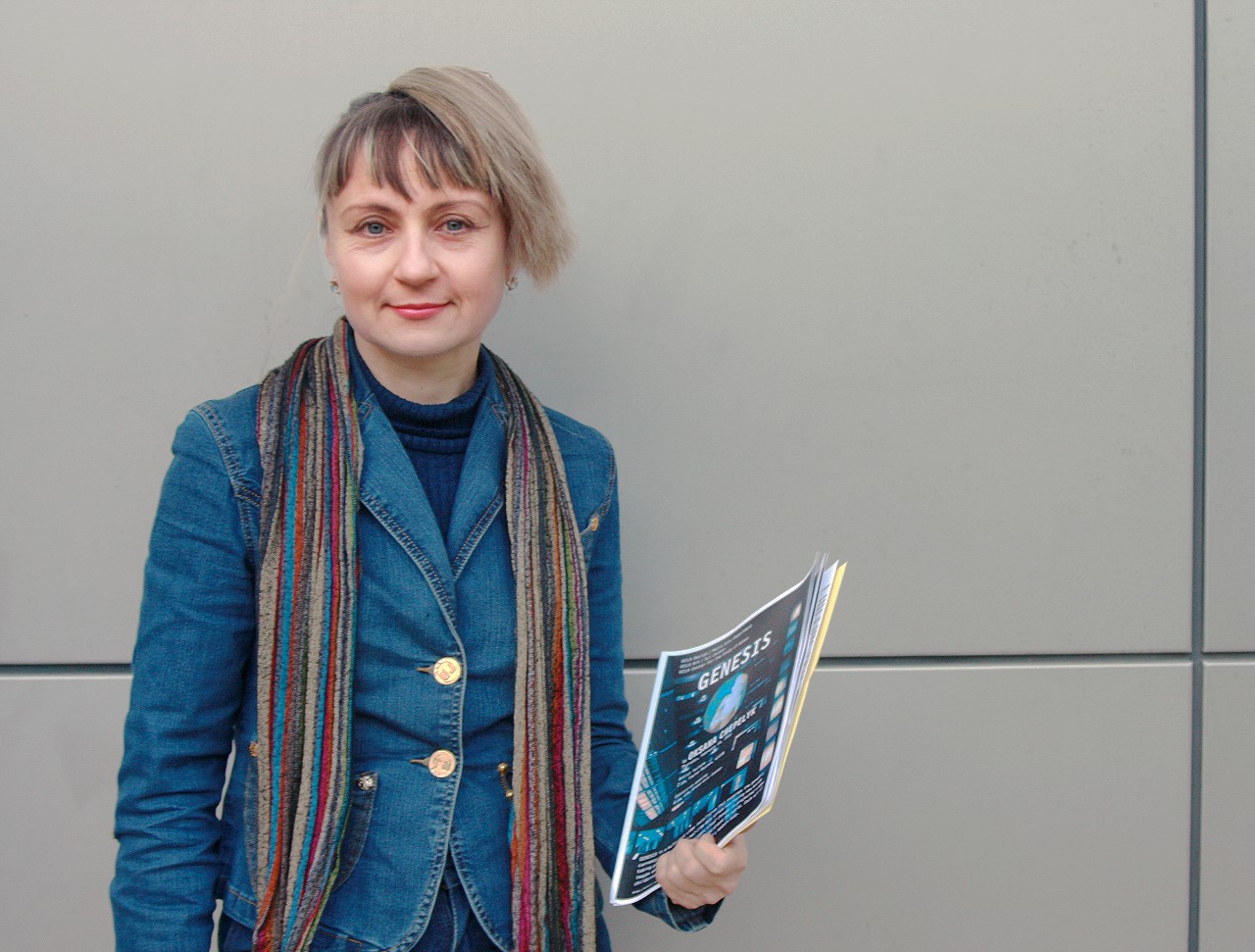
Oksana Chepelyk’s Biography
Oksana Chepelyk 1978-1984 studied at the Art Institute in Kyiv, followed by a PhD course in Moscow, 1995 CIES in Paris, 1996 Amsterdam University, 1998 the New Media Study Program at the Banff Centre, Canada, 2000-2002 Bauhaus Dessau, Germany, and 2003-2004, 2010-2011 Fulbright Research Program at UCLA, USA.
Oksana Chepelyk started during her studies as a media artist amd belongs nowadays to the premier Ukrainian mediia artists – the retrospective is focussing on her status as an artist using moving images, but as Dr. Oksana Chepelyk, she is also a leading researcher of The New Technologies Department at The Modern Art Research Institute of Ukraine, author of the book “The Interaction of Architectural Spaces, Contemporary Art and New Technologies” (2009) and curator of the IFSS in Kyiv.
Residencies: 1996 CREDAC, Paris, 1998 BANFF Centre, Canada, 2001 ARTELEKU, San Sebastian, Spain, FACT, Liverpool, UK, 2000-2002 Bauhaus Dessau, Germany, 2015, DEAC, Budva, Montenegro, 2018 SAV, Tainan; Kuandu Museum, Taipei, Taiwan.
1992-2021 awarded with grants in France, Germany, Spain, USA, Canada, England, Sweden, Montenegro and Taiwan. She has widely exhibited internationally: 1998 MOMA, New York, 1999 “ART FAIR” Stockholm, Sweden, 1999 Museum of Contemporary Art, Zagreb, Croatia, 2000 German Historical Museum, Berlin, 2001 Munich, Germany, 2000 ISEA, Paris, 2001 Museum of the Arts History, Vienna, Austria, 2002 “SEAFair”, Museum of Contemporary Art, Skopje, Macedonia, 2003, 2007, 20011 Museum of Jurassic Technologies, Los Angeles, USA, 2008 “DIGITAL MEDIA Valencia”, Spain, VII Digital Art Salón, MACZUL Museum of Contemporary Art del Zulia, Maracaibo, Venezuela, 2009, 2010 “ArtVilnius”, Vilnius, Lithuania, 2010 “Sarajevo Winter” Art Biennale, Sarajevo, Bosnia and Herzegovina, 2011 Broad Art Center, Los Angeles, USA, Art Arsenal Museum, Kiev, 4th Biennale of Contemporary Art, Moscow, Russia, 6th Tashkent Biennale of Contemporary Art, Uzbekistan (Award), 2012 1st Kyiv International Biennale of Contemporary Art ARSENALE, MMOMA, Russia, 2013 Sarajevo Museum, Bosnia and Herzegovina, MMOMA, Russia; 2014 International Festival “Sarajevo Winter 2014”, B&H; IX ART-KYIV Contemporary, Art Arsenal National Museum Complex, Kyiv, Ukraine; “Long Path to Freedom”, Ukrainian Institute of Modern Art, Chicago, USA; 2015 “Decompression: Coming Up for Air” Festival “L’Ukraine – Scene libre”, Paris, France; “Borderline. Ukrainian Art 1985-2004”, PinchukArtCentre, Kyiv; “The File” – Electronic Language International Festival, the Sesi-SP’s Art Gallery in Centro Cultural Fiesp – Ruth Cardoso, Sao Paolo, Brazil; DEAC, Montenegro; 2016 XVII LPM Amsterdam, Netherlands; 2017 XVIII LPM Amsterdam, Netherlands; “City Code” ArtBatFest 8, Almaty, Kazakhstan; “Anonymous Society”, PinchukArtCentre; 2018 2018 “Flashback. Ukrainian art of the 90th”, Art Arsenal Museum, Kyiv; “Meta-Physical Time-Space”, Tainan, Taiwan, “Free D”, Kuandu Museum, Taipei, Taiwan; “A Space of On’s Own”, PinchukArtCentre, Kyiv; TiFF 2018, Soulangh Cultural Park, Tainan, Taiwan; 2019 “Falling shadow of “Mriya” on the gardens of Giardini”, Ukrainian Pavilion, Arsenal, Venice Biennale, Venice, Italy; “Insatiable Mind” Salisbury Arts Centre, UK; 2020 “Art+Feminism”, Spazju Kreattiv, Valletta, Malta; XI MADATAC International Festival of a Contemporary Audio-Visual & New Media Art, Madrid, Spain; 2021 1st Ukrainian Biennale of Digital and Media Art, Artarea, Kyiv, Ukraine.
She has been working with experimental video films since 1994. Her films were shown and awarded within different film, video and new media festivals: in Kiev, New York, London, Tallinn, St. Petersburg, Osnabruck, Montecatini, Linz, Moscow, Paris, Berlin, Oberhausen, Liverpool, Belo Horizonte, Karlovy Vary and Venice /A category/, Chisinau, Weimar, Tel-Aviv, Ankara, Pesaro, Santa Fe, Stuttgart, Barcelona, Berdiansk, Sebastopol, Sarajevo and Clermont-Ferrand. From 1993 she organised 15 curatorial exhibitions (Ukraine, France, USA, Canada, Brazil, Kazakhstan and Germany), 30 solo exhibitions in Europe and America, and participated in a number of joint exhibitions (Russia, Germany, Lithuania, Ukraine, France, USA, Sweden, Croatia, Brazil, Austria, Macedonia, Bosnia and Herzegovina). 1999 A.I.D.O. FilmVideo Award, Italy. 2013 Cinemadamare Award at Venice IFF, Italy. 2003 Werklietz Award 2003 at EMAF, Osnabruck, Germany. In 2007 she has founded the International Festival of Social Sculpture in Kiev.
Awards: 1997 and 2007 ArtsLink Award and Independent Projects Award, USA. 2003, 2010 Fulbright Awards, USA. 2011 6th Tashkent Biennale Award, Uzbekistan. 2013 Artraker Award, UK. 2018 Best Project of The Year, Taiwan.
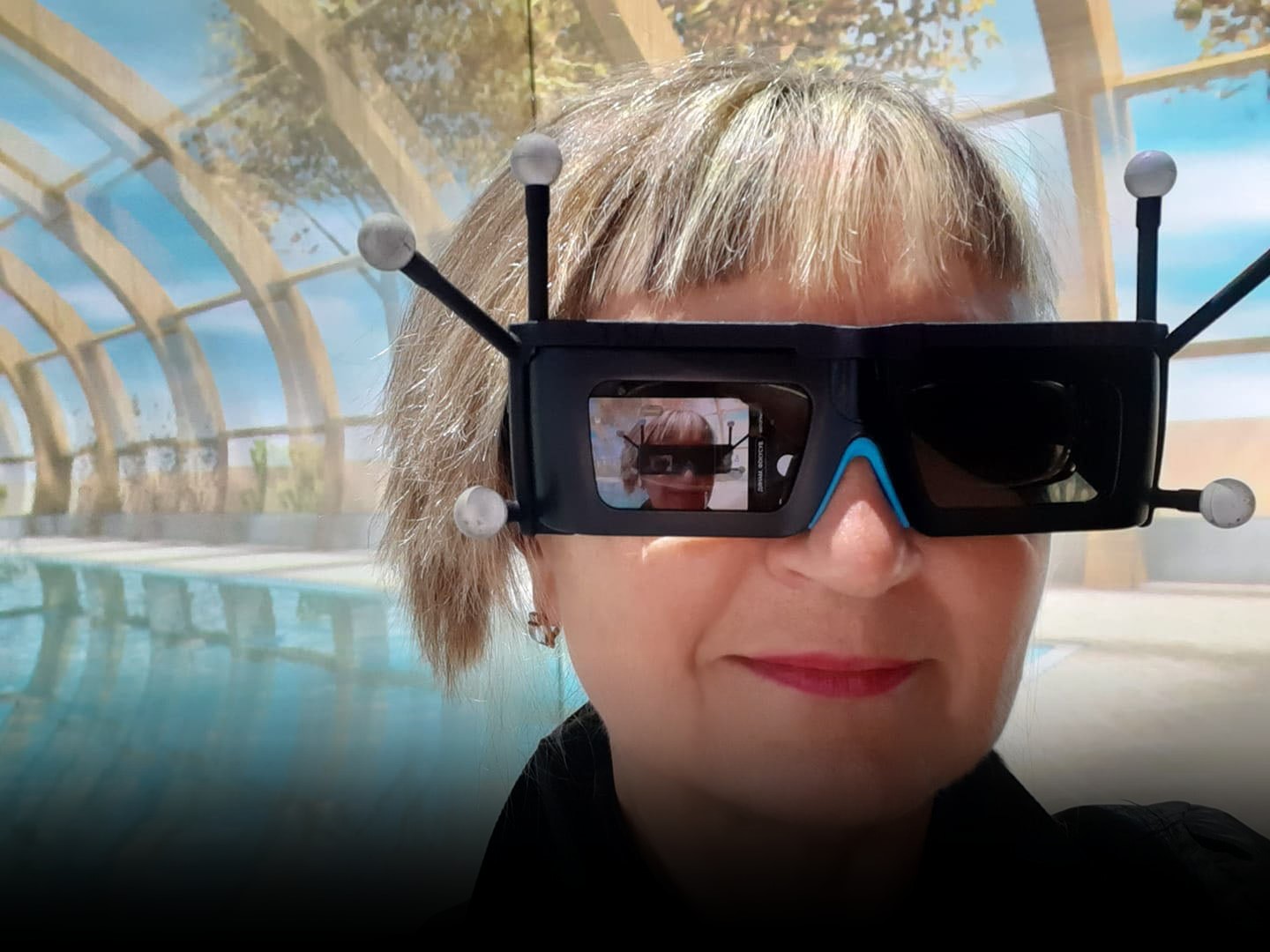

Oksana Chepelyk
Ukrainian videomaker
Interview: 10 questions
Wilfried Agricola de Cologne interviews – Oksana Chepelyk 2015
http://vip.newmediafest.org/?page_id=1722
1. Tell me something about your life and the educational background
I was born in Kiev in Ukraine, where I live and work today. I studied architecture at the Art Institute in Kiev, 1978-1984, followed a post-graduate course in Moscow, 1986-1988. After the collapse of USSR architecture and constraction, which requires a lot of investement was on dead bed. So I started with my art, theater and fashion practice. I followed the Independent Residency Program at CREDAC in Paris, 1996, the New Media Study Program at the Banff Centre for the Arts, Canada, 1998, at Bauhaus Dessau, Germany, 2000-2002, at Design and Media Art Department, UCLA, USA (Fulbright Research Program), 2003-2004 and 2010-2011. I work as multimedia artist with video, film, performance, photography, installation, painting and public art. I have been working on experimental video since 1994.
2. When, how and why started you filming?
1990-1993 I’ve been colaborating with A-A-A Theater as an artist created the veareable decorations. After the death of theater I’ve organized my Oksana Chepelyk’s Fashion Theater showing „Mysteries of Moving Objects“ 1994-1998. I was not satisfy just with documentation of my performances. So, since 1994 I started video experiments with my performances. But at that time it was so dificult to get camera, so if I had chance to get camera for half an hour, film has to be done with this period of time. That how I started to make the art films, or so called „film-concept“ (term coinced by Lubomyr Hoseiko, French film critic who has organized the retrospective of my experimental films in Paris in 2009). Through internships in other countries in various spheres of art (architecture, film, media art), I gradually outlined the key problems that I resolve with new concepts by working with form: «Mysteries of the moving objects» (1995–1996), «Meeting of Two Submarines» (1997), «Virtual Sea Tower» (2000) and «Origin» (2006), in which inflatable objects play the main role.
3. What kinds of topics have your films?
Overall, the themes that I develop are especially geared for dialogue, oriented toward communication, open to the audience. Visual experiments dealing with gender research. Since 1992 post-soviet countries start to discover fashion with all illegal activities around (like sex-slavery and so on). At that time I focused on the topic of woman as a commodity, mass consciousness, power and intercultural communication, history that shape our present and future through gender approach. I appealed to the phenomenon of confession where the sexuality is researched as an intercultural experience. My videos balanced between the research of sexuality and politics. They appealed to the danger of the 20th century mass illusions, the global mediatisation of our life and explored a problem of the responsibility. Our time may be remembered in the history of humanity as the era of manipulation that is gradually destroying the border between the artificial and the real, the natural and the constructed. And the state politics that, in the words of Michel Foucault, distinguishes itself today through its capability to “force one to live and allow one to die” is taking on the markings of the very “biopolitics” that ensures the survival of the human race – the masses – and doesn’t see, notice, or hear the individual person. Emphasizing this dangerous opposition in „Origin“ video, „Genesis“ project is supplemented by a documentary „Birth“ video of actual labor with blood, pain, physical suffering, and the first cry of newborn life… The theme of manipulation of the human body, using it as an instrument in political, advertising, aesthetic, and other activities, delineates one of the themes running through my work of that period: “Contemporary Mysteries” (1997), “Leader’s Favorite Toys” (1998), “Free D” (2000), the movie shot on 35 mm film “Chronicles of Fortinbras” (2001), and “Female ID” (2002). Incorporating new media technologies and touching a number of content-spatial dimensions of perception and interpretations of reality, my works simultaneously seem to confirm Paul Virilio’s bitter conclusion: “Progress acts on us like a forensic scientist who violates each orifice of the investigated body. It not only overtakes the human, but goes past him, and heaps up, accumulates and condenses in each of us the full range of (visual, social, psycho-motor, affective, sexual, etc.) detrital disorders which it has taken on with each innovation, each with their full complement of specific injuries.” What role remains for art in such conditions – as a mirror of the problem, an avenue for social therapy, a project for a new reality, or the personal response of the author whose live emotion is capable of being heard over the buzz of global information?
In 2000-2002 I took part in the program “Bauhaus Kolleg” (Dessau, Germany), which aimed at the complex study of cities much attention was devoted to the social aspects of architecture and city planning. These spheres urgently demand using specific instruments and problem vision of the contemporary art. Such video projects as «Virtual Sea Tower» (Rio de Janeiro), «Introduction», «Bermuda Tunnel» and «Free D», “Urban Multimedia Utopia” are on the crossroads of many problems: communications in the contemporary city, the coexistence and functioning of social and virtual space. They responded to many critical questions, such as the artist’s vision of the contemporary city, the attempt to use urban architecture or the structure of social space as a cultural text, which can be read in various unexpected contexts.
I work on the problem of the context in which contemporary art exists, especially the media context. My projects are socially oriented, and it can be explained through several factors. I try to apprehend and to understand society and social space acting as an architect through the prism of a city, viewing it as a complicated multifunctional model of the human existence. I connect theories of the urban development with the economic, ecological and demographical problems and therefore come closer to the understanding of spatial and temporal relations, interactions between media flows and the human being. By means of my own artistic message I embody the conception of the synthesis of architectural space, contemporary approach and new media.
The Collider project works with time, space, science, urbanism, history and new technologies. It examines the iconic places of C20-21 political history. The project deals with events, which took place in different urban landscapes, which had influenced the subsequent historical development. This large, long-term project began in the USA, in Dallas – on the site of the John F. Kennedy assassination. Under experimental conditions, colliders research quantum particles collision to generate strange matter, anti-matter, art collider researches human being collisions and energy outcome. Project connects science, history with the economic, social and political problems to understand the global breaks we live now, historical perspectives and interactions between human being. Dealing with democracy, science and history, it is about the understanding of our space-time, researching the relation between past, present and future transformation of society. COLLIDER is a panoramic video of some of the world’s most perilous political flashpoints: Sarajevo, Bosnia and Herzegovina, the site of 1914 Archiduc Ferdinand assassination in Sarajevo followed by WWI and National Library of Bosnia and Herzegovina fired on and burned during Bosnian war 1992-1995; Dallas, Texas, USA, site of the 1963 John F. Kennedy assassination; site of the LA Riot; the Russian White House, Moscow, site of a 1991 failed coup against Mikhail Gorbachev in Soviet Union; Independence Square, Kiev, Ukraine, site of 2004-2005’s Orange Revolution events and Euromaidan 2013-2014 functioning as space of freedom, of battles against repression and injustice under conditions of paradigmatic changes. According to Spinoza the thinking is equivalent to action, where the bodies allocated with the mental life embodying ideas act. Deleuze interpreting Spinoza said: “the idea imprints in soul and the body enters into an infinite number of interactions”. Installation is an interpretation of such multitude. Reading Spinoza’s unfinished Political Treatise “political physics” of bodies that multitude become “a productive essence” (Antonio Negri) we understand that Ukrainian Maidan is a direct democracy, about which Spinoza only dreamed. The tension points, which structure and collect experience, in which we are wrapped and immersed, is a destiny of video work. The “Collider” video, working with the events that have formed the world in which we live now, raises the question: is a person a particle in the system of accelerators of global forces, or the energy of interaction investigating new values, new forms of thought and new ways of existence in the world – insisting that ‘another world is possible’?
4. How do you develop your films, do you follow certain principles, styles etc.?
Some of my films are based on art performance, some of them research the visual language. My collaborative work with writer Oksana Zabuzhko, whose philosophical essays formed the basis for the film “Chronicles of Fortinbras” (2001), is an example of the this approach. This short film is essentially a performance, which organically intertwines with literary quotations. This film is based on the essay collection of the same title by Oksana Zabuzhko, author of the autobiographical prose work Field Research on Ukrainian Sex (1996). The film interprets the philosophical text and feminist intonation of the writer’s view of national consciousness in a timeless cultural environment with an associative fabric of words and expressive images. In the film it is constructed the imaginary mythological space of the studied phenomenon from metaphorical actions and performances, assemblages of past events and excerpts from historical films. Thus it also evokes Shevchenko’s approach to the female essence and the lot of women in the Ukraine, represented by the female body (the body of culture), tormented and desecrated here by repugnant dwarfs. The latter symbolise male totality – the source of the Ukraine’s passive fate, past and present. The staged episodes, treating the absurd and the grotesque, allegory and parody, also reflect the Ukrainian literary tradition (irrationality and poeticism) and film (Dovzhenko).
«Real Master Class» (2008) documentary film directed was nominated for «Nika» Russian Academy of Cinema Award, granted for the best film of the CIS and Baltic States. This is a film about being Ukrainian artist, about prospects of Ukrainian art. It shows the way to resist and to get the freedom. We observe the director Roman Balayan making his film “Paradise birds” or Andriy Zholdak holding theatre rehearsal, we accompany Oksana Zabuzhko at her meeting with readers. A film researches the creative personalities and cultural climat and reflects on the state of prospects of Ukrainian nation. The sounding balloons go to the noosphere. According to Vernadskyi’s theory about noosphere, culture is the original runback of energy that is accumulating on Earth and carries out influence on Space.
My last full length documentary “In The Shade of White Acacias” is made in the style of cinema verite. It is an existential film about Earth and unlike how it is represented as young woman, full of energy by Dovzhenko, but as old one, who has five adult children. This one family exemplifies today’s life in Ukraine, its daily troubles and hardship of oligarchic feudalism that caused the change of survival strategies for simple rural family. Instead of resting in the shade of white acacias the old man Ivan and his wife Stepanyda struggle to survive the crisis. When their elder son died, they learn how to live further. Film develops the topic of “life and death”, as through the prism of personal tragedy, but also in a social sense of Ukrainian village decline. And if today the EU countries are expressing a “deep concern” about the events in Ukraine, then at the Stalinist era of the agricultural Ukraine suppression and Terror-Famine the world preferred to keep silence.
I’m always interested in experimentation. My last longue term Collider project working with time, space, science, urbanism, history and new technologies. Is an example. If the latest theory of Tom Weiler and Chui Man Ho is right, the Large Hadron Collider – the world’s largest atom smasher – could be the first machine capable of causing matter to travel backwards in time. And time is one of the fundamental concepts for physics and philosophy, one of the key co-ordinates of space-time. In the COLLIDER project, time-space is presented by panoramic video that consists of 24-60 fragments of moving images, which are revolved with acceleration in an artistic collider, activating a mechanism of audio-visual jumps where certain fragments can gradually be substituted by archival videos. Computer generated visual breaks we live now that will shape our future. “Collider_100” includes visualization emulating fluid dynamics, virtual cosmogonic breathing, kaleidoscopization of chaotic urban structures, unlocked through decryption keys that evoke transformational metaphors of human energy. It is a video, where human being is immersed into cosmogonic fluid environment.
5. Tell me something about the technical equipment you use.
In 90 an access to the technical equipment in Ukraine was very limited, so I need to go abroad for the residencies to get it. In Ukraine one film shot with Arriflex on 35 mm, the others with Panasonic HVX 204 AER camera, some with Canon Mini DV camera, the rest with Canon photo camera.
6. These days digital technology is dominating also video as a medium. In which way the digital aspect is entering the creation of your videos, technologically and/or conceptually?
I’m always interested in experimentation. Digital aspect is entering technologically and conceptually the creation of my videos. I have been using distortive, multiplicative techniques in “Urban Multimedia Utopia” (2002) with its bitmap city landscapes, “Shifting Time” (2004) and “Collider”, (2011-2012) “Collider_100” (2013-2015). Whereas “Urban Multimedia Utopia” digitally bitmapped a single view to distort it, thus offering a direct sense of a mediated urban experience, Collider’s bitmapping is a composition of multiple angles, such that the privileged position of the subject is itself distorted. In the “Collider” a fragmented representation of a space-time makes reference to the quantum theory. According to superstring theory, at every point in our four-dimensional space, a 6-dimensional Calabi-Yau manifold is attached – so small that they’re at the Planck scale, the subatomic scale at which quantum field theory breaks down and gravitational forces becomes erratic. These problematic scales are one of the objects of project’s investigations. The smallest particles, accelerated and brought into contact with one another, disfigure the experience of space-time – and thus, subjectively, space-time itself. Multi-dimensional manifolds incorporate these fluctuations – both quantum and geometric – giving rise to complex folds, complex forms. Unexpected emergence and uncontainable risk, rebirth and apocalypse are both contained in those moments. These quantum-level accounts go some way towards explaining how can we be so close and yet not perceive, not understand, not prevent. Importantly, however, these are not metaphors; these are not analogies; these are physical explanations. In A Thousand Plateaus, Deleuze and Guattari insist that their work not be taken metaphorically – that it is variously practical, instructional, imperative. Nietzsche in his Gay Science famously proclaimed: “Long live physics!” – constantly reminding us that the physical world is all we have, that we need to say yes to contingency and ensure that our ethics are grounded in this one and only world. COLLIDER too insists on an engagement with the physical.
These accounts also explain why it can be difficult to see the world from a broader perspective. It’s not simply a matter of standing back or taking a broader view. Project takes a keen sense of structure to form this experience: the philosophy and the physics of critical mass and emergence, of the conditions that yield the new, the unimaginable, the unthinkable. In structure there is both movement and gravity, from which a demanding set of questions emerge. Each of those moments have existed; each historic moment is driven by unknown individuals at untold speeds, accompanied by undeveloped possibilities. If we follow the logic of each moment’s construction, if we follow the logic of Collider’s near political destruction, what kind of an end to our world can we expect – and when?
The Doomsday Clock takes this possibility very seriously, marking just how close we are to the destruction of the world, and updating when a world-historic event occurs. The Doomsday Clock is maintained by The Bulletin of the Atomic Scientists as a perpetual present, indicating the proximity of threats to our survival from nuclear weapons, climate change, and emerging technologies. In January 2007, the Atomic Scientists moved the perilous hand from its originary 1947 setting of seven minutes to midnight, to just five, reflecting the twin threats of nuclear destruction and failure to act on climate change. How many tipping points do we need before moving to reframe the system?
The end may be close in time, but what about space? The manifold and the supercollider complicate this – as do globalized capital, networked communications and the growing scale of contemporary political resistance. The interplay between micro- and macrosystems, between physical and social worlds explores a variety of contemporary and historical phenomena.
It is a critical art that testifies today’s social reality and its traumas. It is important as an approach in art to certify and record some corporeal feeling of contemporaneity, for sake of the future.
It is an invitation to co-experience the complexity of the world, dealing with violent conflicts, social upheaval and war events, that took place in different urban landscapes, which had influenced subsequent historical development. My video art, fed by obscured history and political urgencies, acts as a catalyst for the culturally charged encounters – experiences, feelings, a kind of shared breath – that materialize through the local environments and social relations.
7. How do you finance your films?
Luck of institutional support in Ukraine urges me to go abroad for production residencies: 1997 – Maryland Art Place, Baltimore, USA (Artslink Program);
1998 – BANFF Centre for the Arts, Canada (BANFF Centre grant)
2000-2002 – Bauhaus-Kolleg, Dessau, Germany (Bauhaus Dessau Foundation scholarship)
2001 – FACT Foundation for Art & Creative Technology, Liverpool, UK (FACT grant)
– ARTELEKU Art Centre, San Sebastian, Spain (ARTELEKU grant)
2003 – Prague SCCA, Czech (Soros Foundation grant, USA)
2003-2004 – UCLA, Los Angeles, USA (Fulbright scholarship)
2007 – SFAI, Santa Fe (SFAI grant), Museum of Jurassic Technology, LA, USA (ArtsLink Independent Project Award)
2010-2011 – UCLA, Los Angeles, USA (Fulbright scholarship)
2010-2014 – Cinemadamare IIFF, Italy.
3 films were produced with the support of Ukrainian State Film Agency.
But regarding the difficult economical situation in Ukraine and the fact that Ukraine is excluded from any international programs, very often I produce self-financed videos.
8. Do you work individually as a video artist/film maker or do you work in a team?
if you have experience in both, what is the difference, what do you prefer?
It depends on the budget and certain possibilities. I have experience in both. Sometimes I prefer to work in a team to achieve more professional result, but luck of production budget prevents this. Sometimes I prefer to work individually, there is no need to explain what I want to avoid misunderstanding even beside the luck of budget. It depends on project.
9. Who or what has a lasting influence on your film/video making?
Jos Stelling, Bertrand Blier had lasting influence on me, but when I’ve started with my filmmaking I already tried to search for my own film language.
10. What are your future plans or dreams as a film/video maker?
My future plans as video maker are to develop my „COLLIDER“ project further – examining the Lujza Blaha Squire in Budapest (Hungary), the Geumnamno street in Kwangju (South Korea), Gdansk Shipyard, a place of Solidarność events (Poland), the Tiananmen Square in Beijing (China), the former Berlin Wall (Germany), Grozny in Chechnya (Russia), WTC memorial in New York (USA), Freedom Square in Tbilisi (Georgia), Paradis Square in Baghdad (Iraq), Mexico City’s Zócalo and Paseo de la Reforma (Mexico), Tahrir Square in Cairo (Egypt), a site of Occupy events next to St Paul’s Cathedral in London (UK), Bolotna Squire in Moscow (Russia), Aleppo (Syria) and Donetsk airport (Ukraine). Working on COLLIDER project, I try to cover all places with historical events in public spaces around the globe to complete the piece (to explain global character of installation I would like to refer to «The Clock» by Christian Marclay, the winner of the Golden Lion award at the 2011 Venice Biennale). And as soon as these events are growing, it is endless story and always on a peak. I’m interested to capture the decisive mutations, which are arising from today’s redefinitions of the world and global civilizational changes we live now.
My dream as filmmaker is to go to Cannes with my feature film “Donbas Island”.
The War of 2022
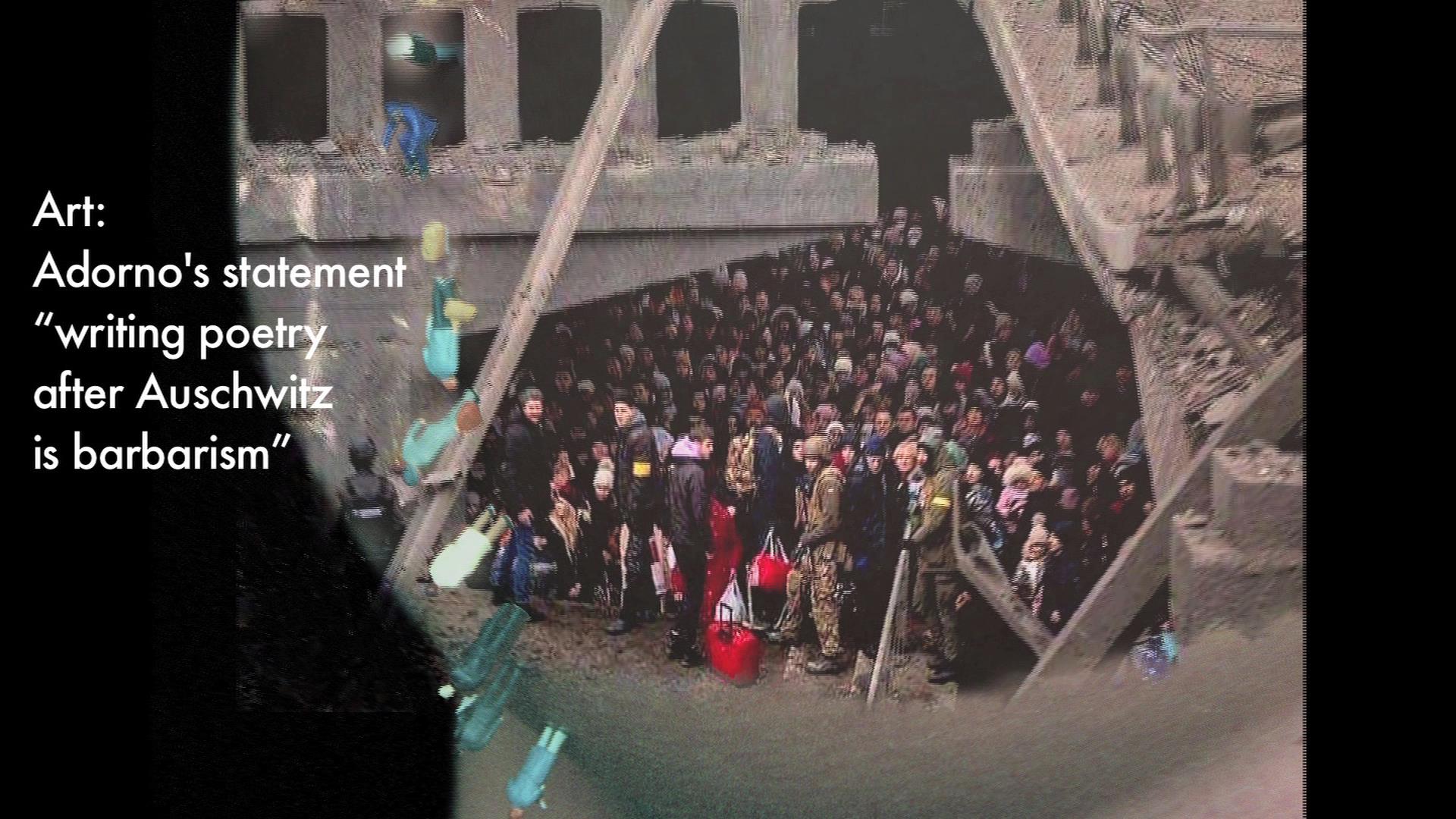
 Click to view the video
Click to view the videoOksana Chepelyk UKRAINIAN GOLGOTHA
UKRAINIAN GOLGOTHA
Statement by Oksana Chepelyk
Art:
Adorno’s statement “writing poetry after Auschwitz is barbarism” is actual again in 2022. Ukrainian Bucha is Auschwitz today.
Life in Ukraine is equal to Deaths:
Mathematics speaks about the Genocide of Ukrainians by Russians in the XXI century with the numbers of mass murders:
Bucha – more than 420 killed,
Gostomel – 400 people;
Irpin – 350, children under the age of 10, killed with rape and torture, as well as girls and women;
Borodyanka,
Vorzel,
Makariv,
Trostyanets,
Sumy,
Chernihiv,
Kherson,
Mykolayiv,
Kharkiv,
Kramatorsk,
Mariupol…
Mariupol …
Mariupol – 22,000 civilians are killed. All atrocities unfold in real time in front of the whole world.
Politics?
“Fear the indifferent! It is with their tacit consent that all evil is committed on earth!”
Author – Oksana Chepelyk
Music – Olexiy Shalygin
The project uses images of the photographers
documenting crimes against humanity,
committed by Russians in Ukraine:
Sergiy Mykhalchuk
Olexander Glyadyelov
Vladimir Yatsenko
Anatoliy Sobolevskyi
Gruzinov Yuriy
Statement was made for
the MANIFESTA 14
project “Secondary Archive” of
the Katarzyna Kozyra Foundation
The video project was made for
Retrospective – OKSANA CHEPELYK
within
Peace Letters to Ukraine – during
the Russian-Ukrainian War
international audio-visual art project
ALPHABET Art Centre @ The New Museum of Networked Art
organised by CologneOFF
The New Institute for Contemporary Art & Moving Images
http://cinema.nmartproject.net/retrospective-oksana-chepelyk/
The project was created at the residency
of FRAC Provence-Alpes-Côte d’Azur
and
IMéRA of Aix-Marseille University
Special thanks to
Emilie Sitzia,
Wilfried Agricola de Cologne
© Oksana Chepelyk 2022









Yarina Butkovska
curator of Ukrainian videoart at The Peace Letter to Ukraine Project
journalist, author and presenter of different radio projects, writer, DJ, editor, reporter, curator
Born in August, 4th,1982 in Ternopil, Ukraine.
Lives and works in Lviv, Ukraine.
1999 – 2004, studying in Lviv National University on journalism faculty
2000 – 2003, Radio «Initiative» 102.5 fm – Author/presenter of projects on cultural and social thematic, DJ: «Radiometro», «Pret a porte», «Art review», «Virmenska, 35th », «CinemaTest», «Radio theatre»…
2002 – 2003, Radio «Lviv wave» – Journalist in newsroom: reporter, editor
2003 – 2005, TV channel «HTA» – Journalist in newsroom: cultural and social thematic reporting
2005 – 2007, Radio «Ternopil» – Editor in news department
2007– 2008 – curator of the First International Festival of Videoart «Kinolevchyk»
Currently employed @ Andrei Sheptytsky National Museum in Lviv


Agricola de Cologne @ http://and.nmartproject.net/?p=82
chief curator of The Peace Letters to Ukraine Project
curator of media art, designer of culture, interdisciplinary media artist, director of experimental shortfilms and videos
founder and director of
– The New Museum of Networked Art – the experimental platform for art and new media (2000)
– The Audiovisual Art Collections @ The New Museum of Networked Art (2005)
– artvideoKOELN – the curatorial initiative „art & moving images“ (2005)
– CologneOFF – The New Institute for Contemporary Art & Moving Images 2005/2020
– creator/curator of The W:OW Project – We Are One World – global networking project (2017) & The 7 Memorials for Humanity (2018)
Besides for a broad bandwidth of dynamic curatorial contexts he is initiating in physical & virtual space like JavaMuseum (2001), NewMediaFest (2002), Violence Online Festival (2003), SoundLAB & VideoChannel (2004), CologneOFF (2005), netEX (2007), AVMCI (2012), Agricola de Cologne is standing also for the co-curator & co-organiser of events like festivals & exhibitions of contemporary art, but also for the jury member of divers festivals.
Since its introduction in 2000, Agricola de Cologne is represented as an artist & curator on more than 800 festivals and media art exhibitions in New York, Chicago, Los Angeles, Knoxville, Pittsburgh, Toronto, Montreal, Mexico City, Guadalajara, Merida, Caracas, Maracaibo, Buenos Aires, Rosario, Montevideo, Rio de Janeiro, Sao Paulo, Belo Horizonte, Santiago de Chile, Quito, Bogota, London, Paris, Lyon, Marseille, Toulouse, Madrid, Gijon, Sevilla, Valencia, Barcelona, Lisbon, Oslo, Bergen, Stockholm, Helsinki, Tampere, Kopenhagen, Amsterdam, Rotterdam, Tokyo, Nagoya, Seoul, Manila, Hongkong, Bangkok, Phnom Penh, New Delhi, Guwahati, Mumbai, Kolkata, Jakarta, Perth, Melbourne, Casablanca, Rabat, Marrakesh, Addis Abeba, Istanbul, Ankara, Yerewan, Tblissi, Damaskus, Jerusalem, Tel-Aviv, Bethlehem, Gaza, Basel, Zurich, Vienna, Linz, Salzburg, Graz, Kiev, Kharkiv, Riga, Tallinn, Vilnius, Moscow, St.Petersburg, Kansk, Perm, Yekaterinburg, Sofia, Varna, Bukarest, Arad, Timisoara, Budapest, Belgrade, Zagreb, Split, Lubljana, Rome, Naples, Milan, Pescara, Venice, Torino, Bologna, Berlin, Cologne, Münster, Düsseldorf, Karlsruhe, Nuremberg & elsewhere, but also on Biennials like Venice Biennale 2003, 2005, Biennale of New Media Art Merida/MX 2003, Biennale of Electronic Arts Perth/Australia (2004), Biennale de Montreal (2004), Biennale of Video & New Media Santiago de Chile (2005), ISEA Nagoya (2002), ISEA Singapur (2008), ISEA Belfast (2009), Kochi Musziris Biennial (2016/2017)
Agricola de Cologne –> https://agricola-de.cologne
artvideoKOELN –> https://artvideo.koeln
CologneOFF NICAhttps://cologneoff.nmartproject.net
The New Museum of Networked Art –> https://www.nmartproject.net


The “Retrospective Oksana Chepelyk” is a collaboration / networked action between
THe New Museum od Networked Art,
the curators Yarina Butkovska (Lviv/Ukraine), Wilfried Agricola de Cologne (Cologne/Germany) and
the artist Oksana Chepelyk (Kiev/Ukraine)
@ Alphabet Art Centre – launched on 4 June 2022.
All texts, images and videos © by the artist/authors/curators or owners.
The Online/Offline Show – “Retrospective Oksana Chepelyk”, its concept, design and work out © by Agricola de Cologne/The New Museum of Networked Art.




